Pawpaw Pollinator Watch
Photos of Spring 2021 pollinator surveillance
Photos by Dallas Ford and Connie Barlow
Contact: [email protected]
Female and Male flower stages at Marc Boone Farm, 16 May 2021
Video and Photography: Connie Barlow
Connie Barlow videoed Marc Boone on 7 May 2021, as he gave her a tour through his 300-tree pawpaw orchard. It was a sunny cold morning, with very high winds. The three images below were all single-frame grabs from the raw video.
BELOW: Connie collected a low branchlet that had one of the few very open flowers, and that also shows the early leaf stage, which is only at the branch tip. This is the female stage flower. Are the white dots pawpaw pollen? Are the black dots at stigma tips indications of pollination?
Photography: Dallas Ford • Video: Connie Barlow
Photography: Dallas Ford • Video: Connie Barlow
Connie Barlow and Michael Dowd
Day 1: May 17
80 degrees F, breeze
DAY 1 I learned that it was important to shake a flower (after gently using a hand lens to look inside it) because the 2 similar dark small beetles usually will only drop out if vigorously shook. Consequently, I also learned I needed to shake each downward-hanging flower into a light-colored bowl.
INSECTS OBSERVED: I saw one large housefly walking around the outside and then disappearing into the inside of the flower; then quickly emerging again, and doing the same thing a second time before flying off. The several insects I photographed are below.
LEFT: The flower is a late-stage male, from which the upper leaf and its smaller inner correlate (pictured at left) were easy to remove without disturbing the insects. The holes of outer and inner leaf were aligned, so there was a single cause to its formation. (See the hole is visible in the upper left photo.)
These photos were taken in sunlight, so they are the best for observing the orangish markings on the beetle. The white strands and dots may be pollen.
80 degrees F, gentle breeze
The two species appeared similar in form, but one was 2X or 3X the size of the other.
The small beetle type seemed to reside in 80-90% of the male flowers I tested, but in only a few of the blossoms in female stages (with no pollen).
The bigger beetle was less abundant on May 17, but very abundant on May 19. May 19 maximal number in a single flower dropping into the bowl when the flower was shaken were 4 of the large beetles and 2 of the small. The flower was in the male stage.
Both beetle species were reluctant to fly, but both did fly, and I was able to video the small one several times preparing to fly. I extracted stills from those videos and post here below.
NOTE: Both beetle species were dark, though possibly with slight reddish or orange marks. The reddish hues seen in the still photos below come from photo editing to enhance visibility of beetle forms, as Connie's video camera is poor resolution compared to Dallas Ford's camera, which will show insects on Day 3, May 20.
OTHER OBSERVATIONS OF INTEREST:
1. SPIDERS ABSENT. Unlike our experience with the pawpaw flowers at Draper-Houston on May 16 where spiders and their webs inside blossoms were abundant, here on May 19 I saw no spiders and no webs.
2. ANTS & BEETLES COHABITED. In one blossom I saw several medium size ants, and a small beetle fell out when I shook the blossom.
1. THE TWO BEETLE TYPES AND FLOWER STAGES (May 19)
Note: The maple seeds were placed in the white bowl for scale.
Videographer Connie Barlow assessed that about 2/3 of the open, maroon flowers were in the pollen-available male stage (left). Perhaps 1/3 (or fewer) were still in the female stage. A number of small green flowers had not yet matured. Was this a peak pollinator day?
2. STILL PHOTOS OF THE SMALL BEETLE (May 19) (captured as frames from the video)
3. STILL PHOTOS OF THE BIGGER BEETLE (May 19) (captured as frames from the video)
BELOW: Both beetle types sometimes play dead when dropping into the bowl (especially the smaller beetle). But here you can see the bigger beetle playing dead (underside exposed, legs folded) and then below that, as it flips toward its side.
80 degrees F, 5:00 pm with breeze picking up
DALLAS FORD captured the best photos of the bigger of the two beetles.
BELOW: The bigger beetle is shown here "playing dead" after falling out of a late-stage male flower. Vigorous shaking of the flower over the bowl had many of the spent anthers falling out too. Because the shaking was vigorous, pollen on the beetle may have happened during shaking. However, as with previous days, the beetles tend to have a lot of pollen around their mouths.
STILL FRAMES BY CONNIE BARLOW:
BELOW: Some kind of a bug at right tip of petal, plus close-up:
Pawpaw Pollinator Watch
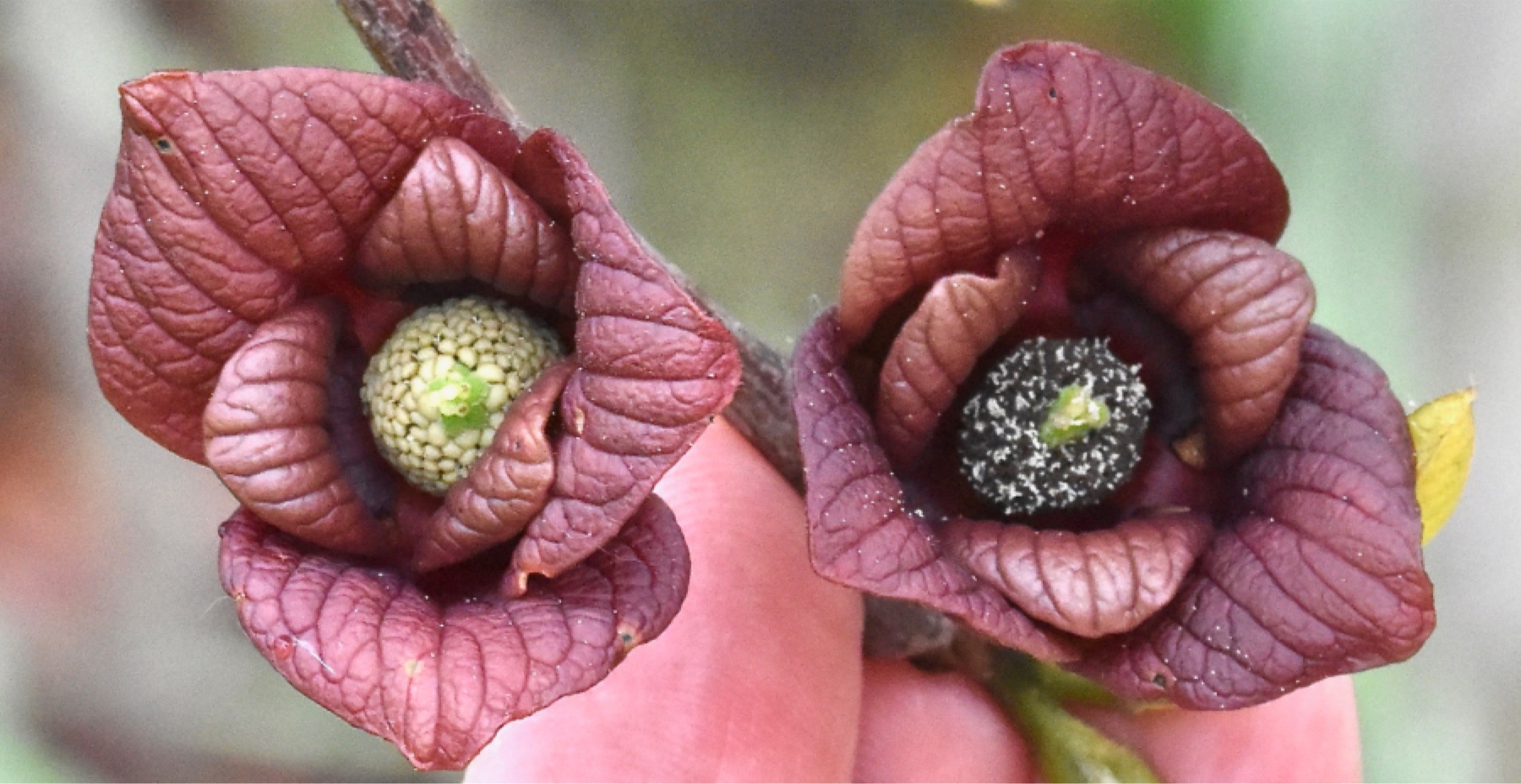
Marc Boone Farm • 7 May 2021
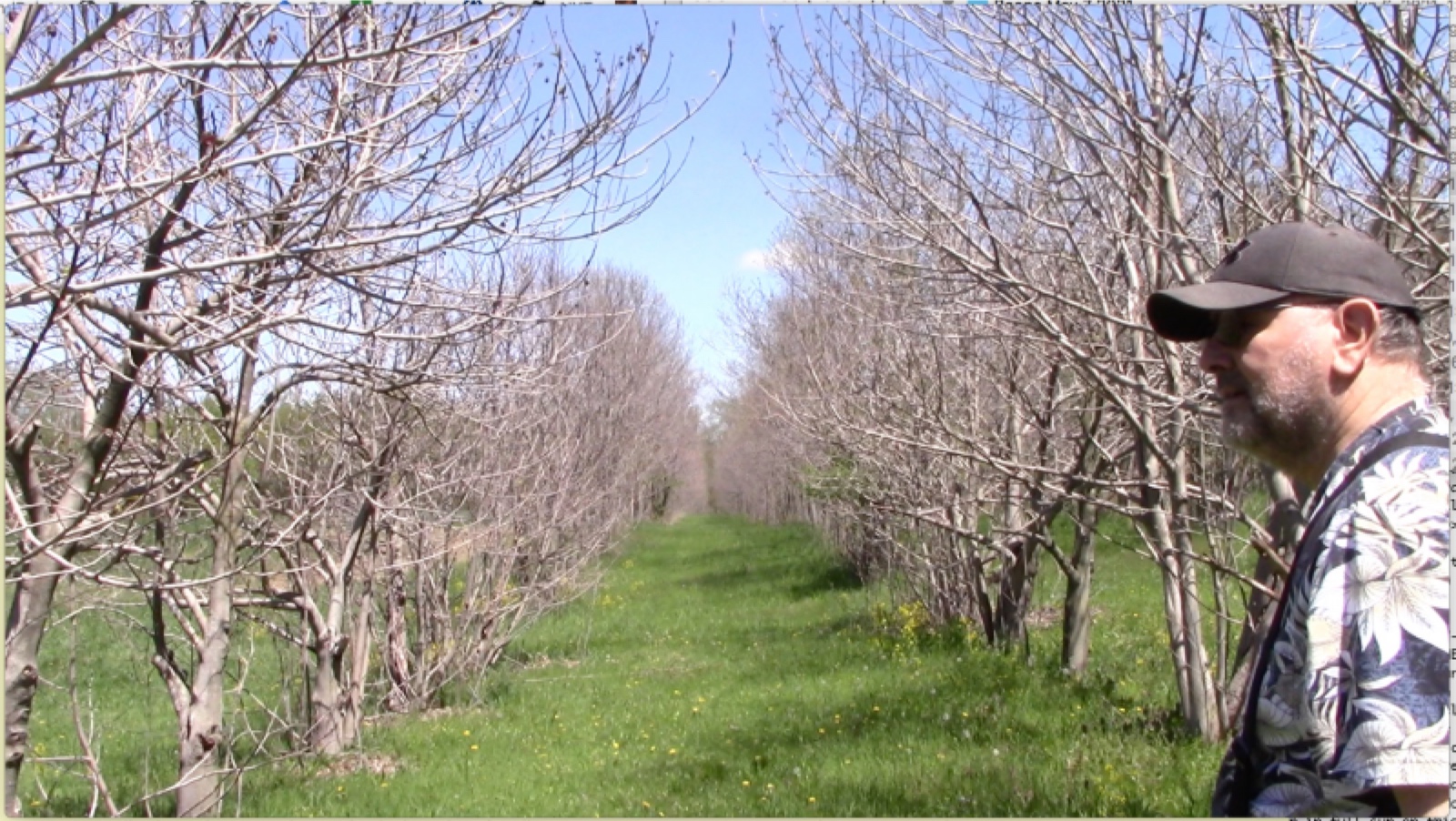
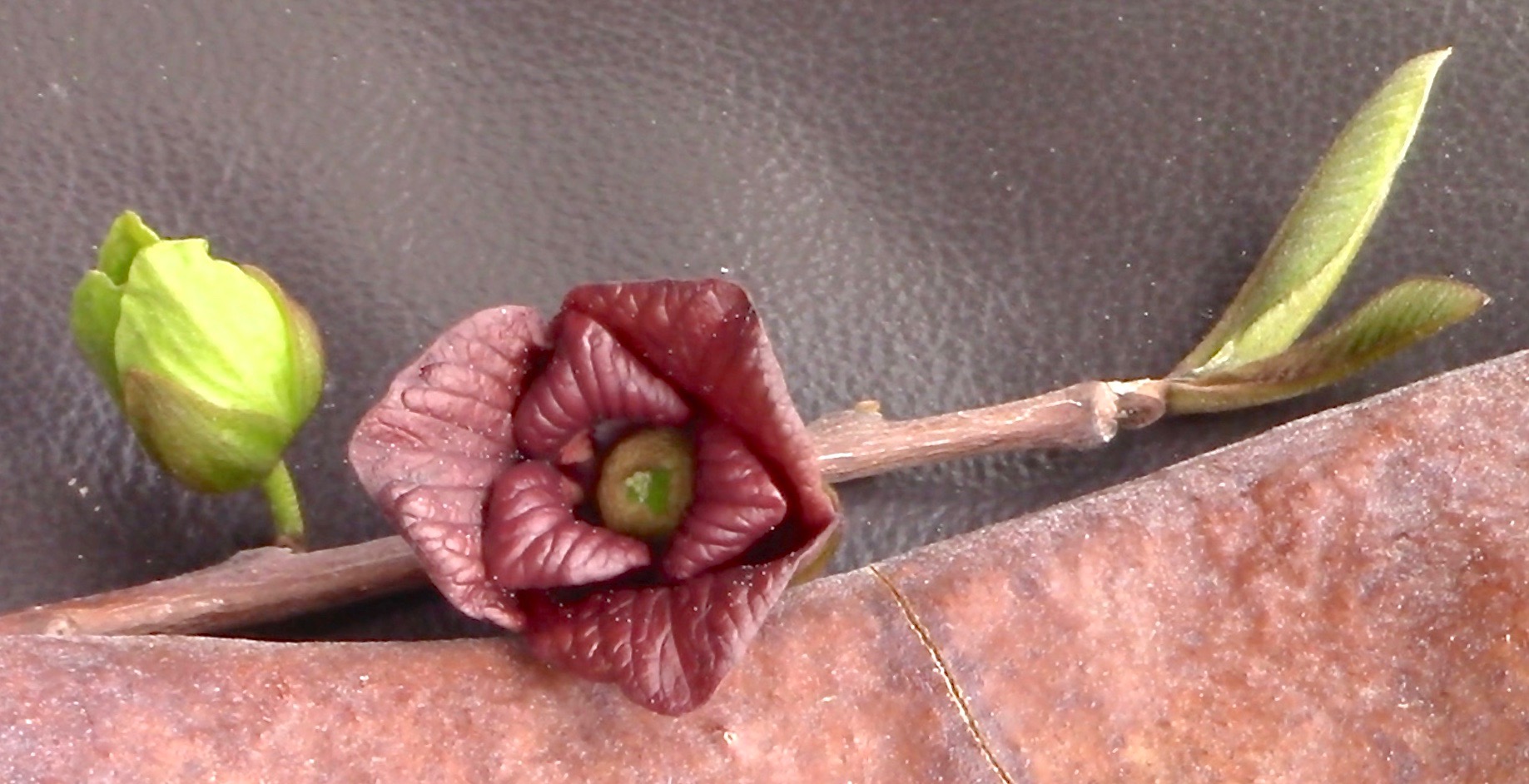
LEFT: Marc observed that the trees had a lot of flowers in bud and a few in bloom this year, though a group at the lowest part of the orchard had flower buds killed by frost on branches within 6 feet of the ground. 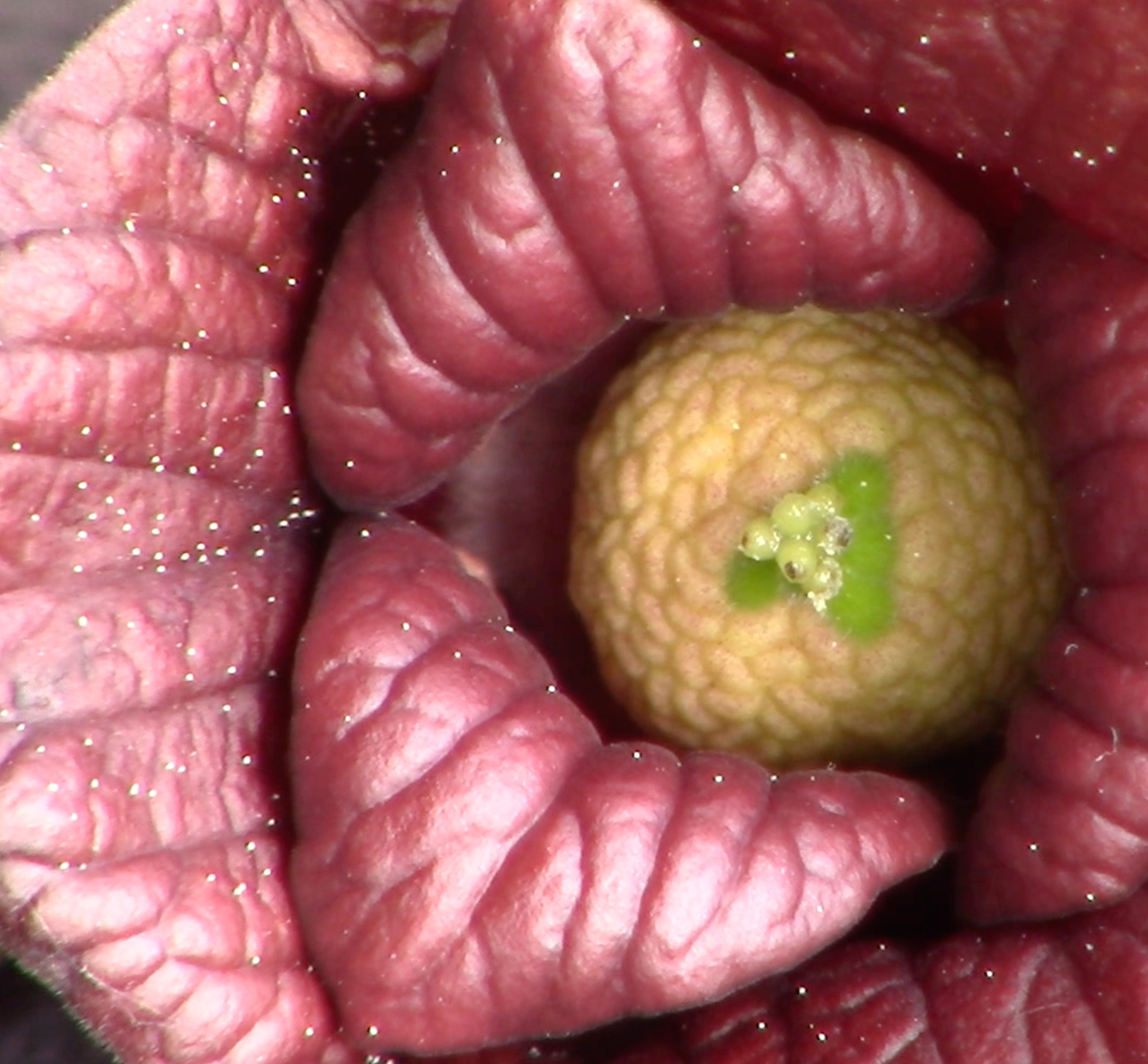
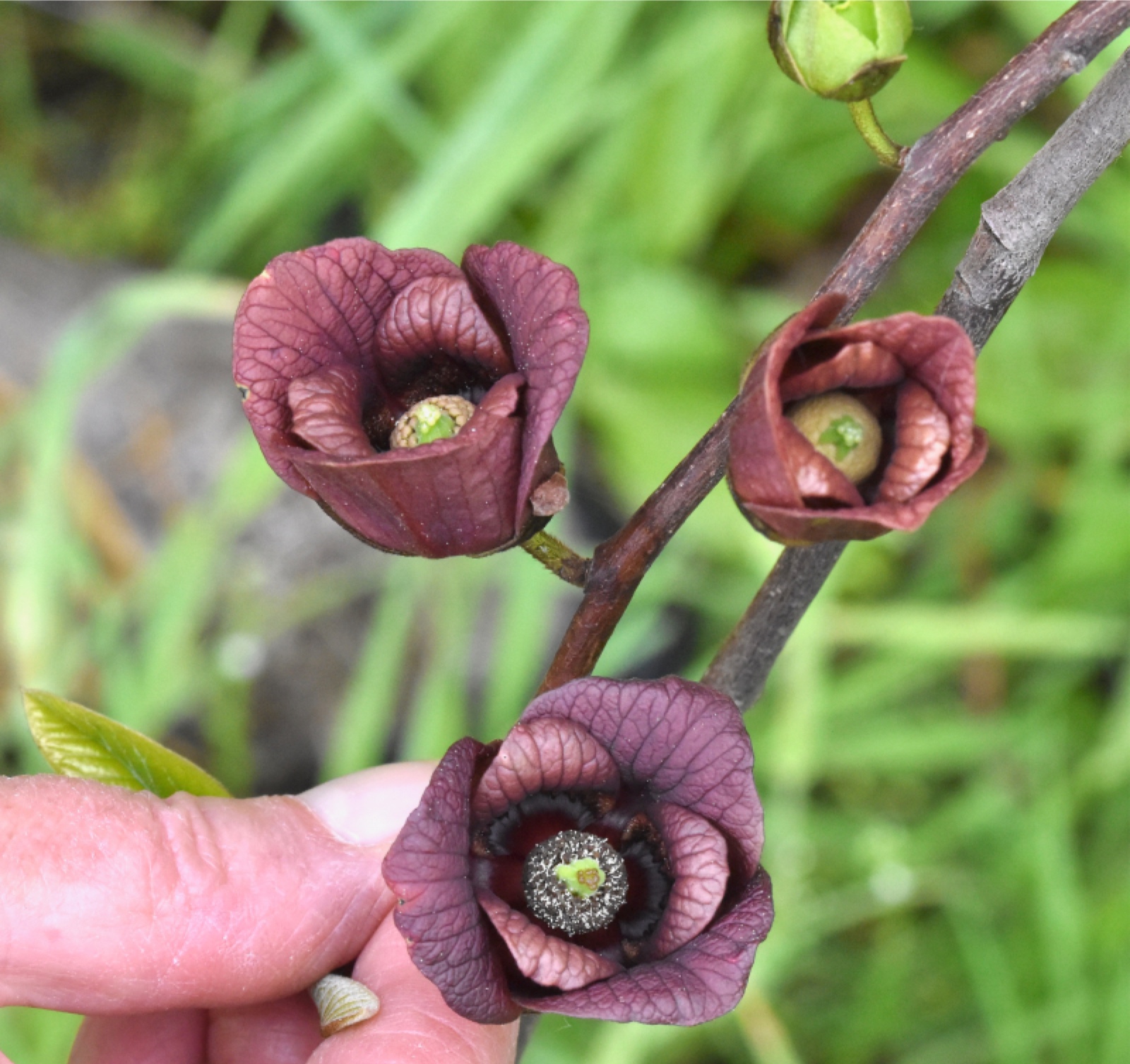
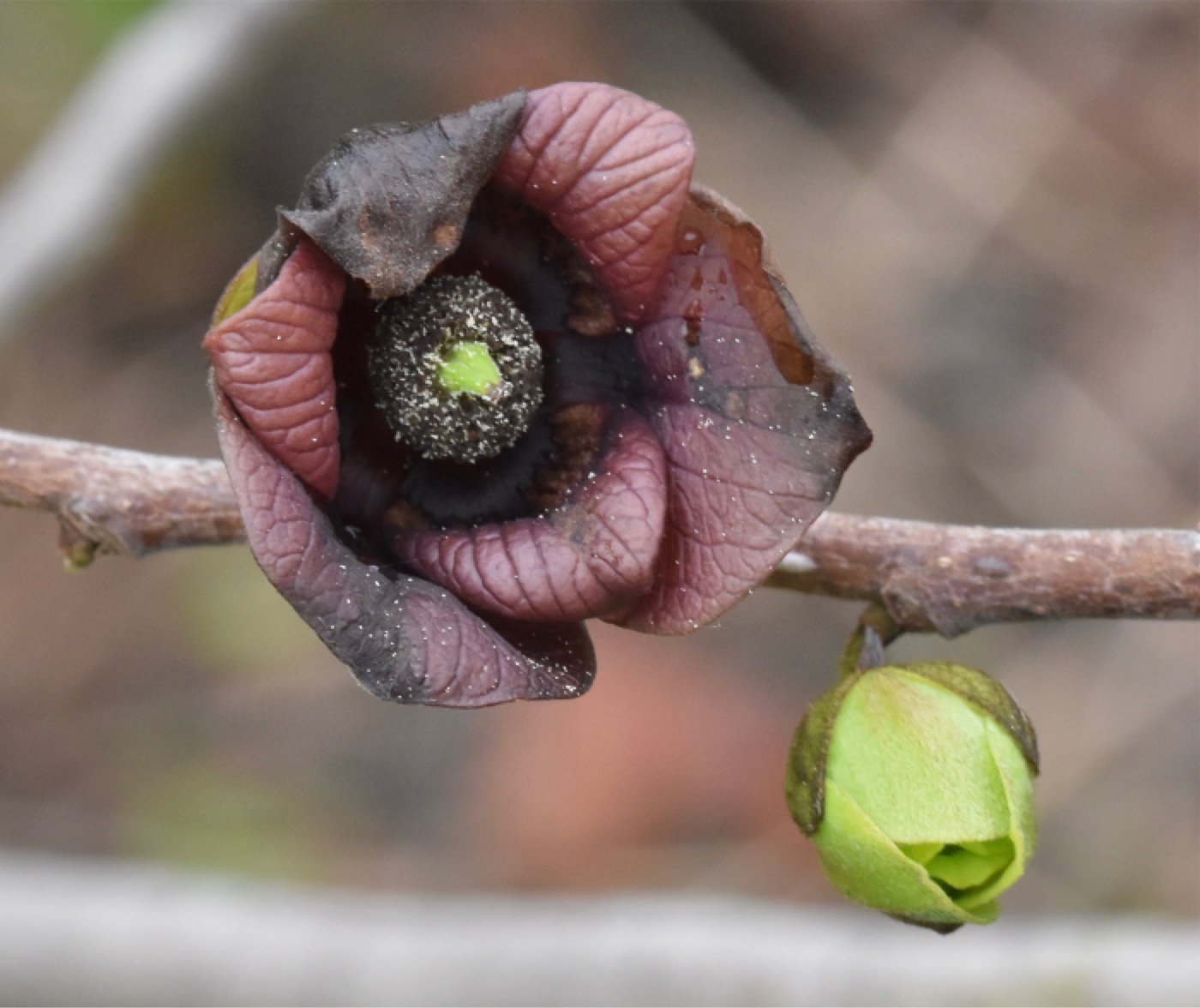
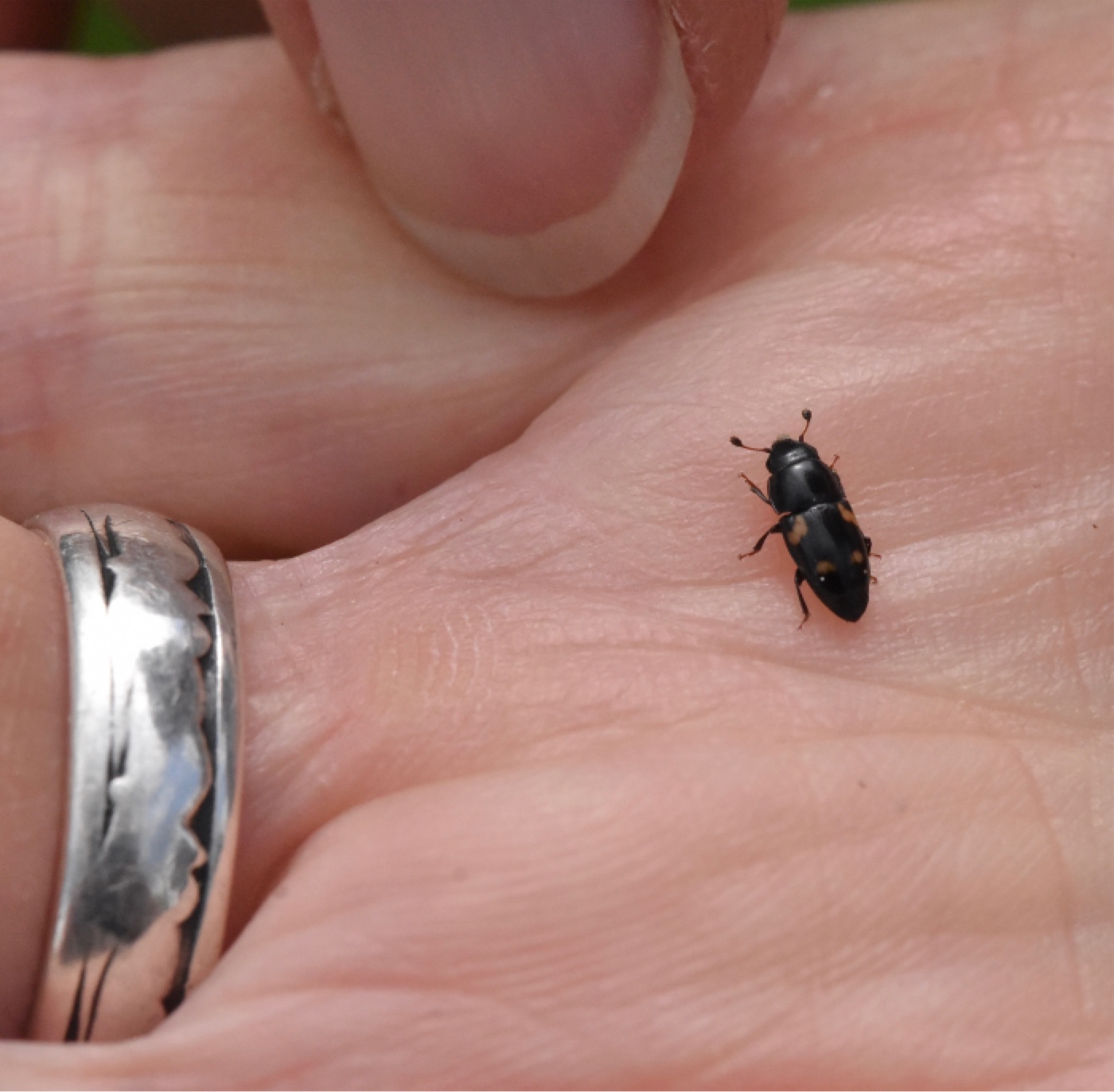
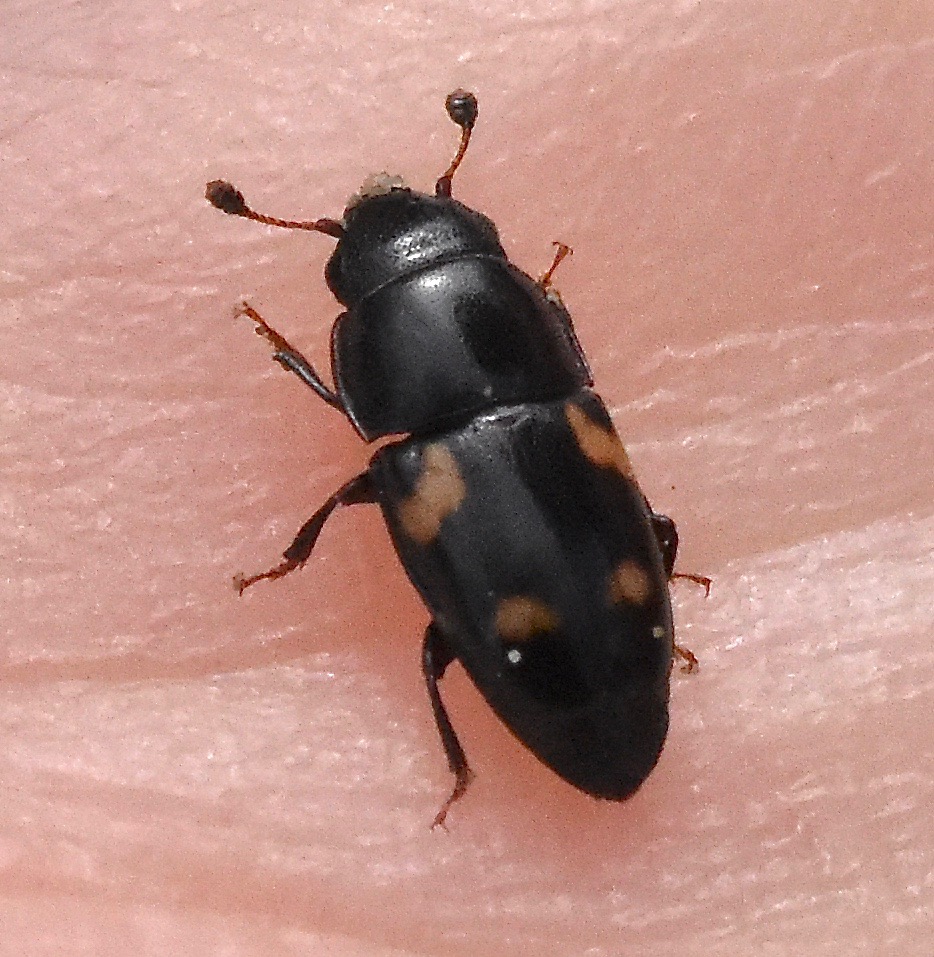
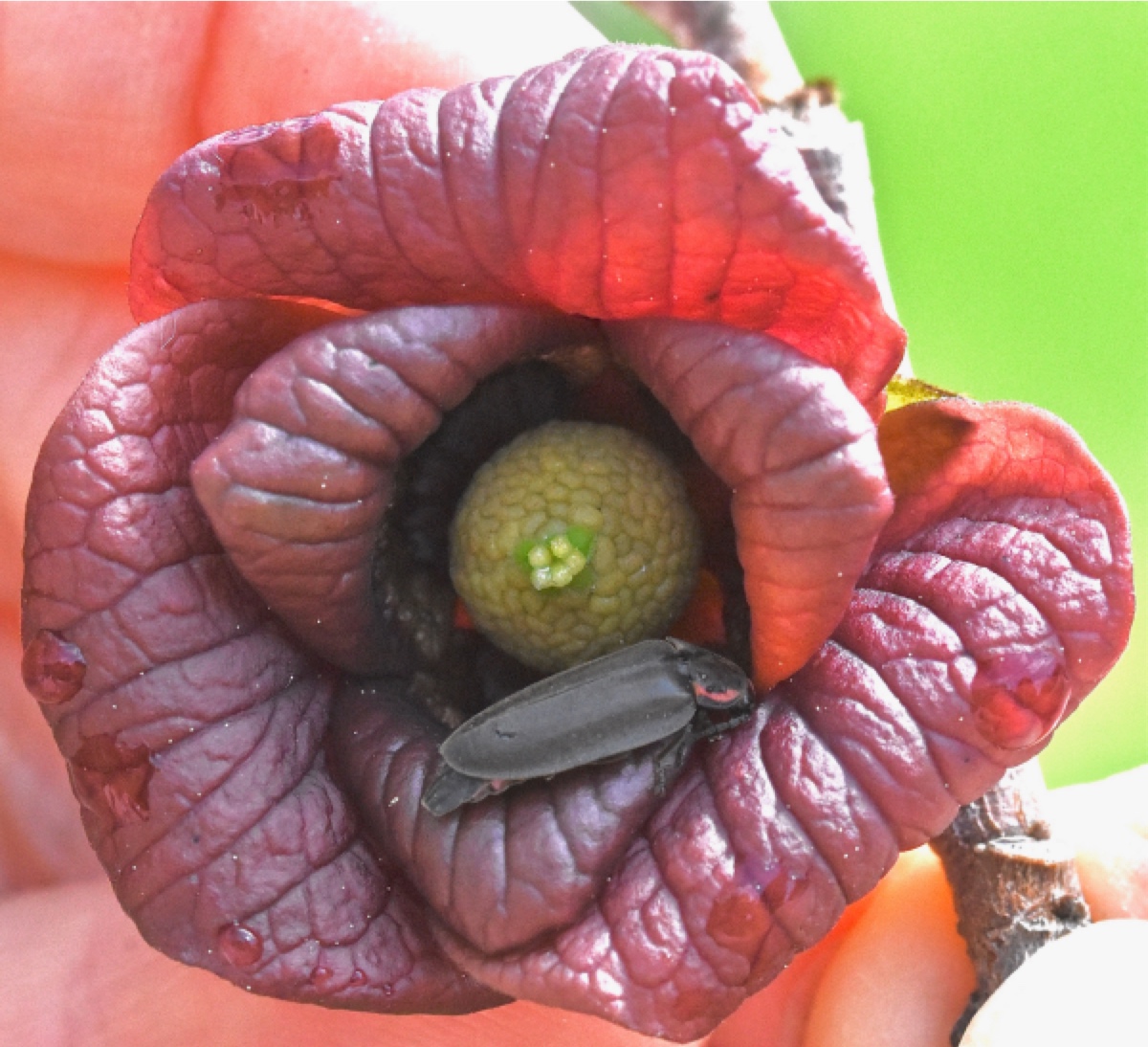
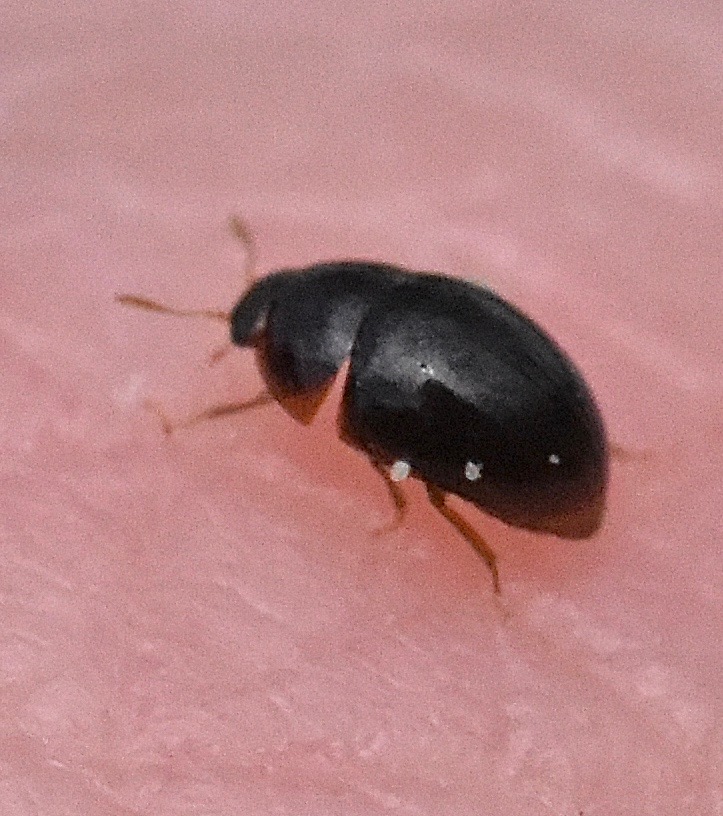
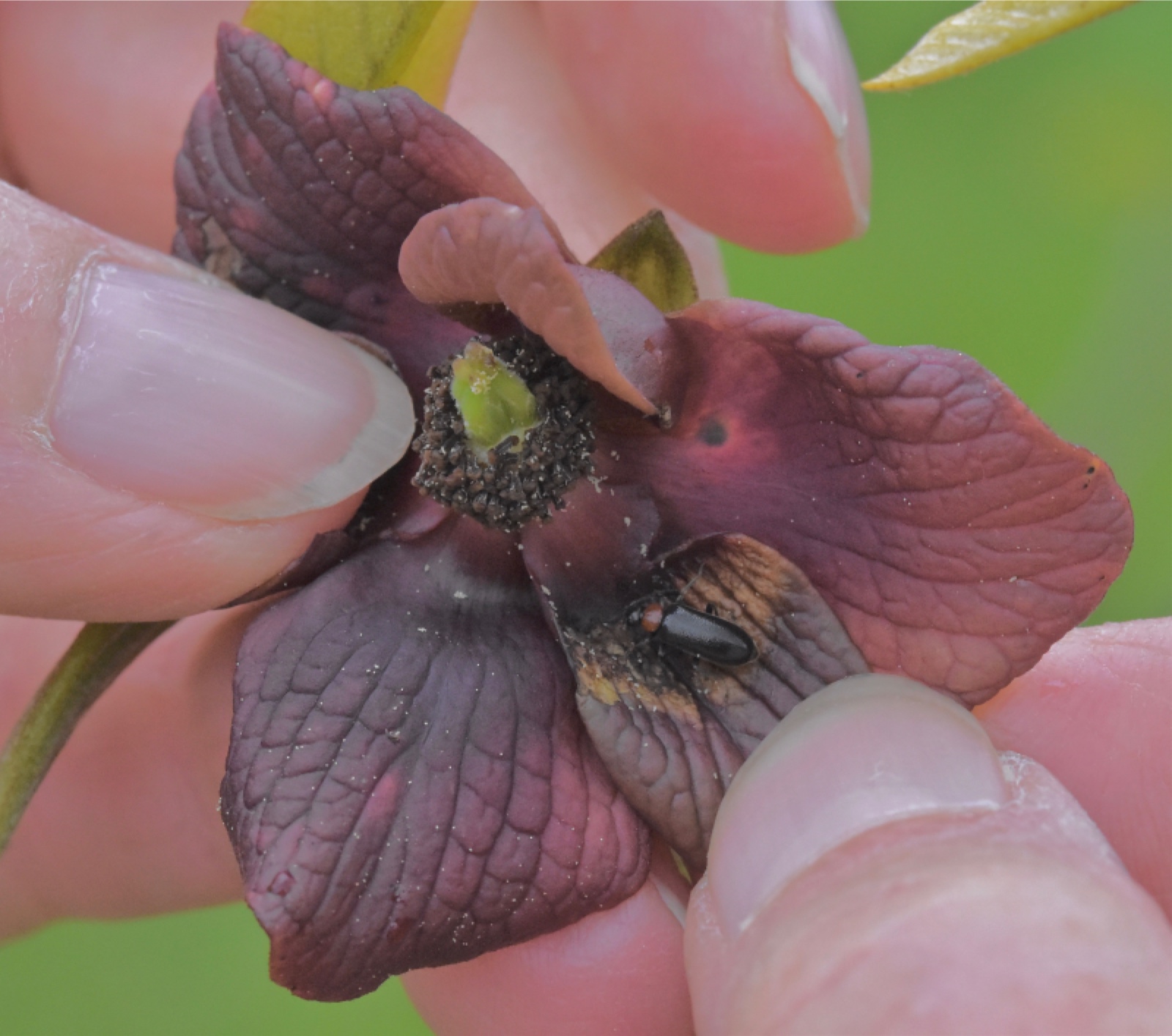
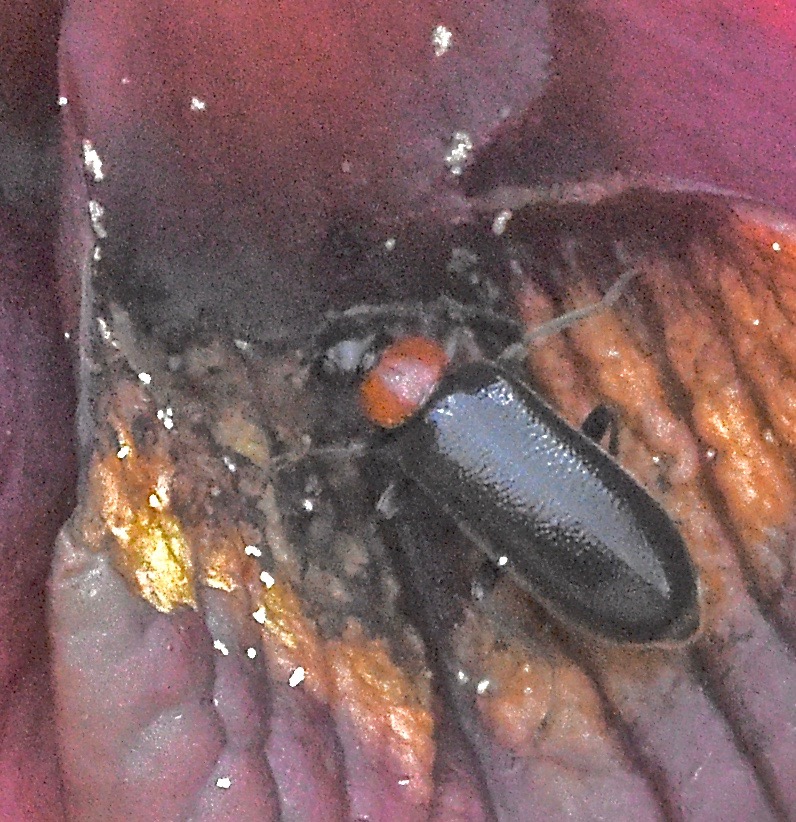
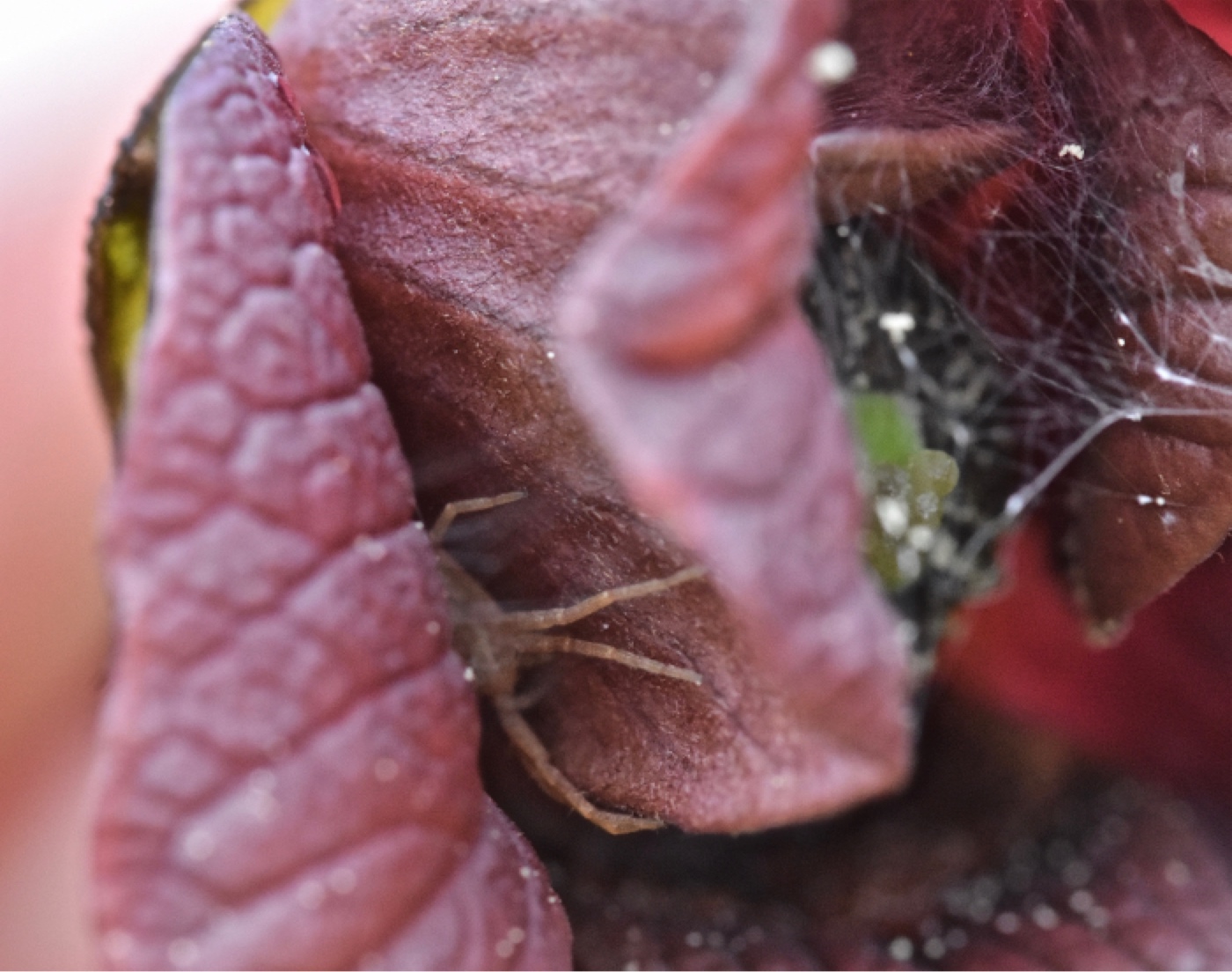
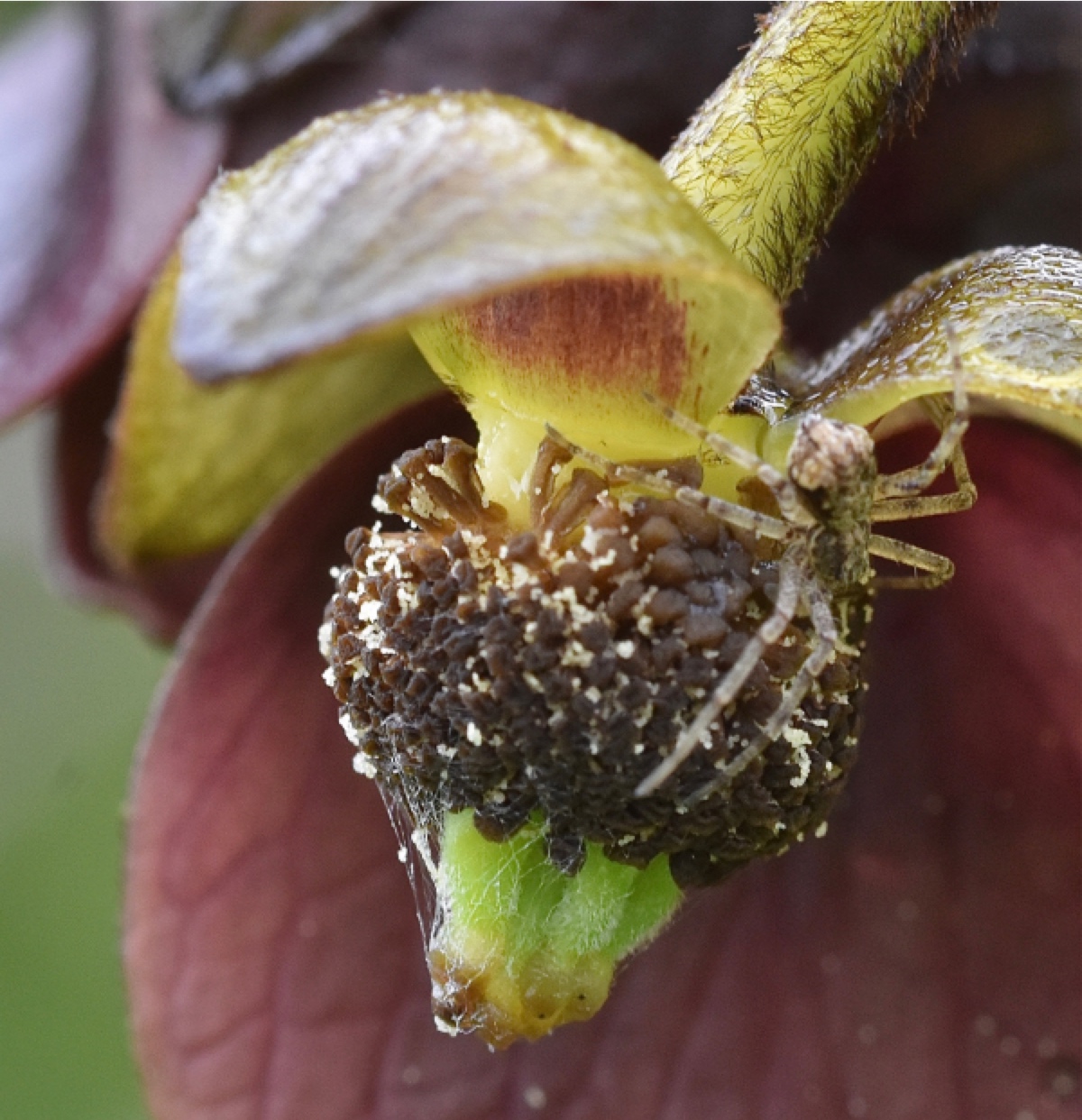
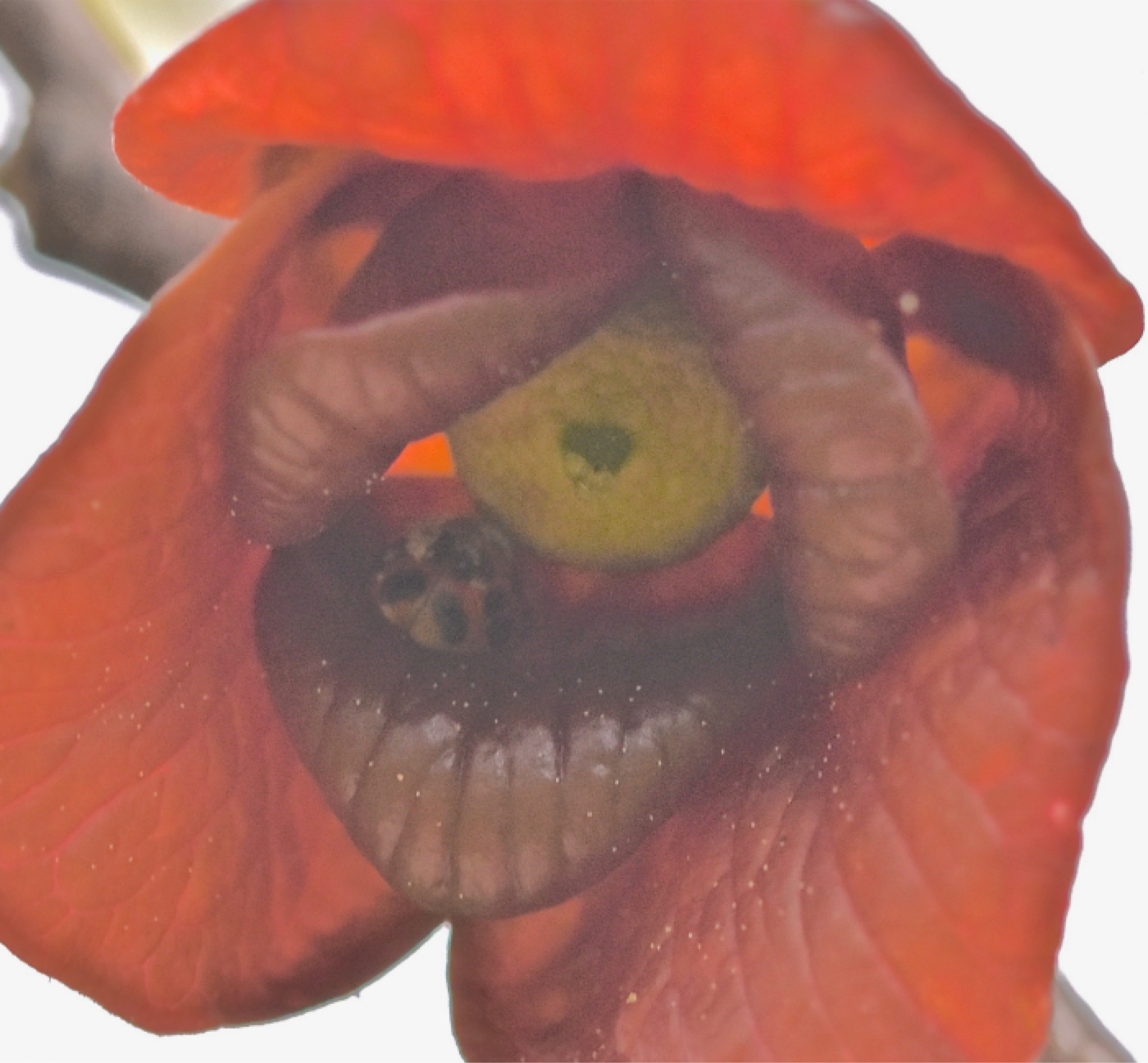
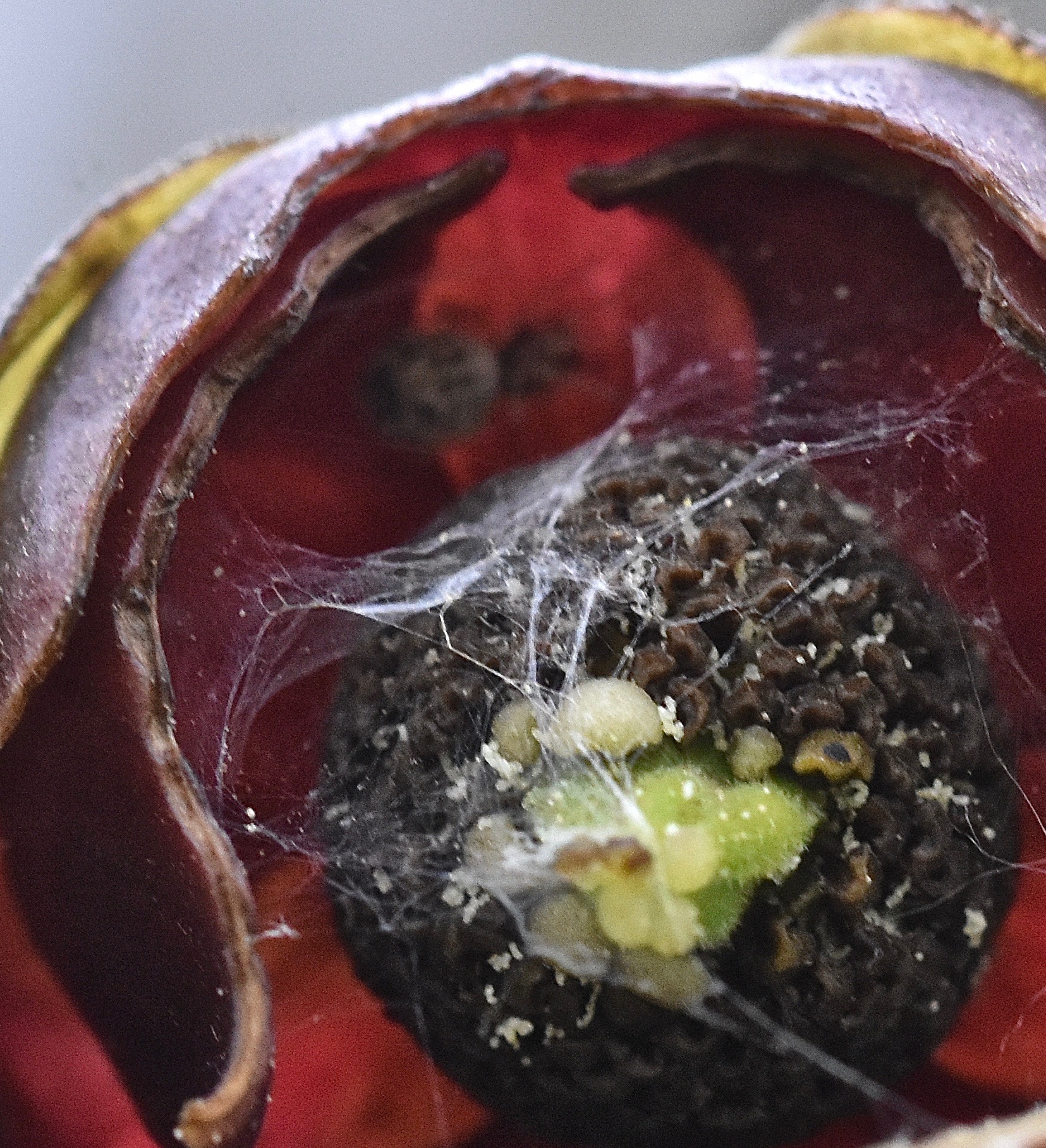
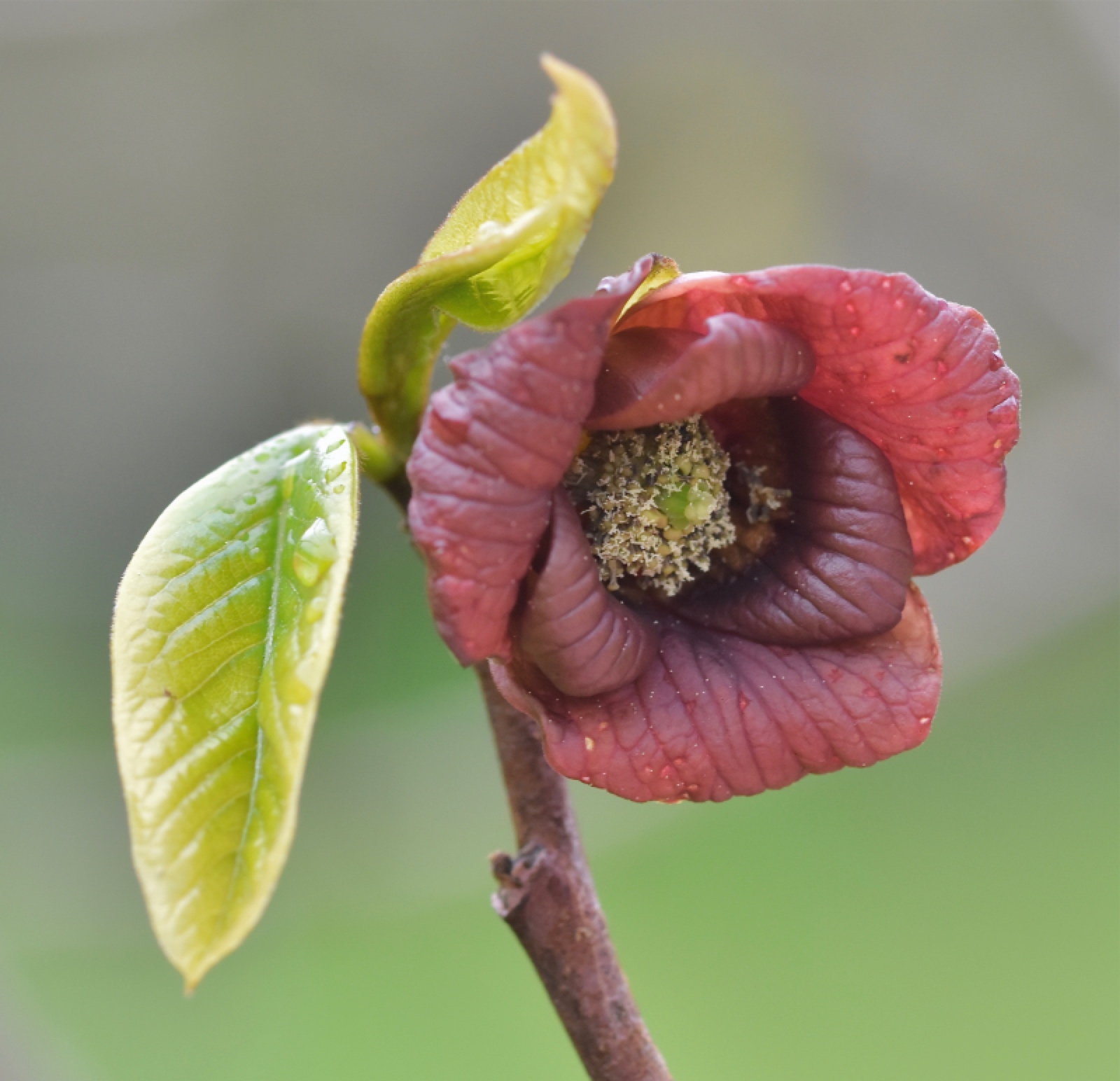
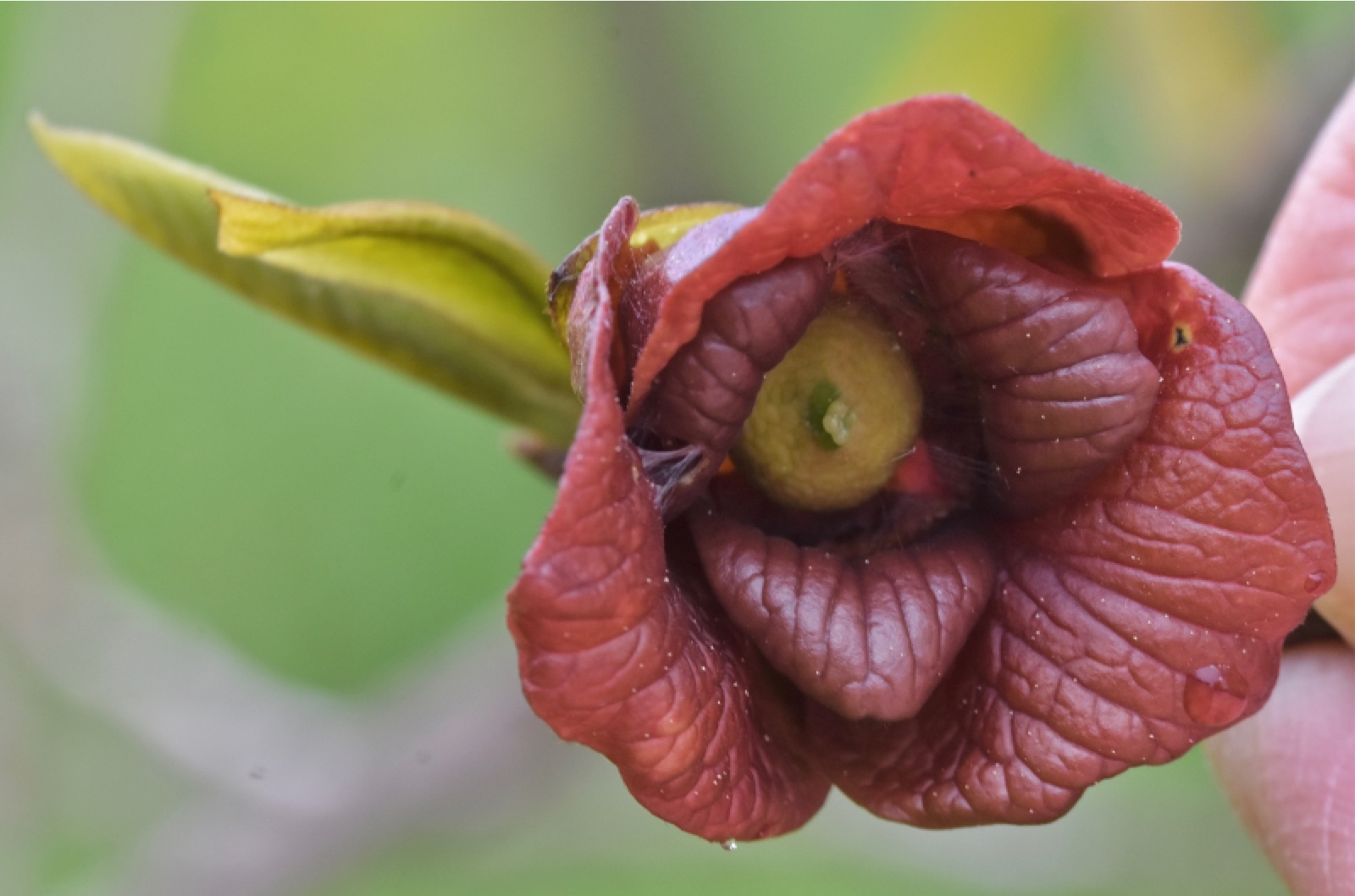
Draper-Houston Preserve • 16 May 2021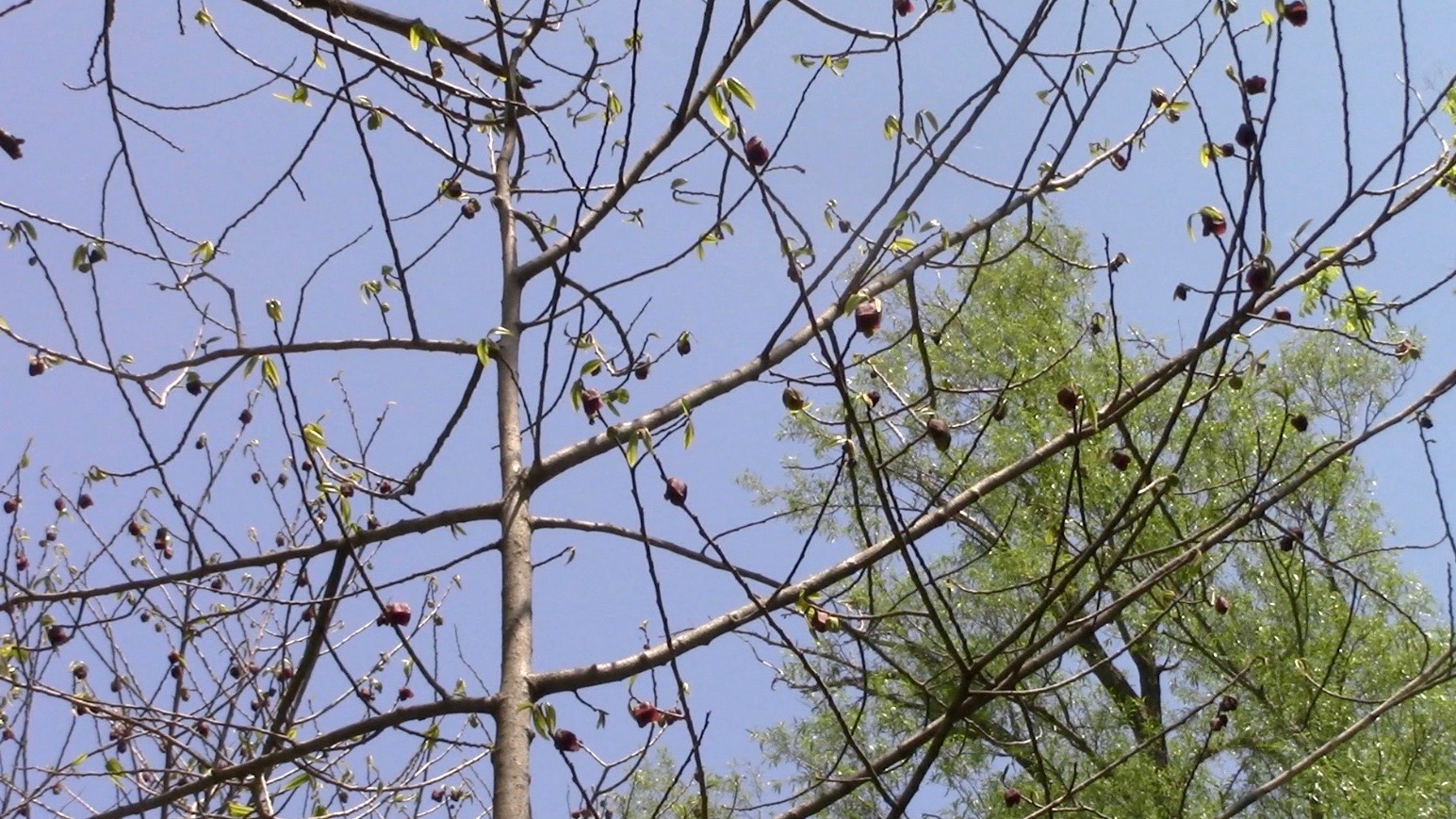
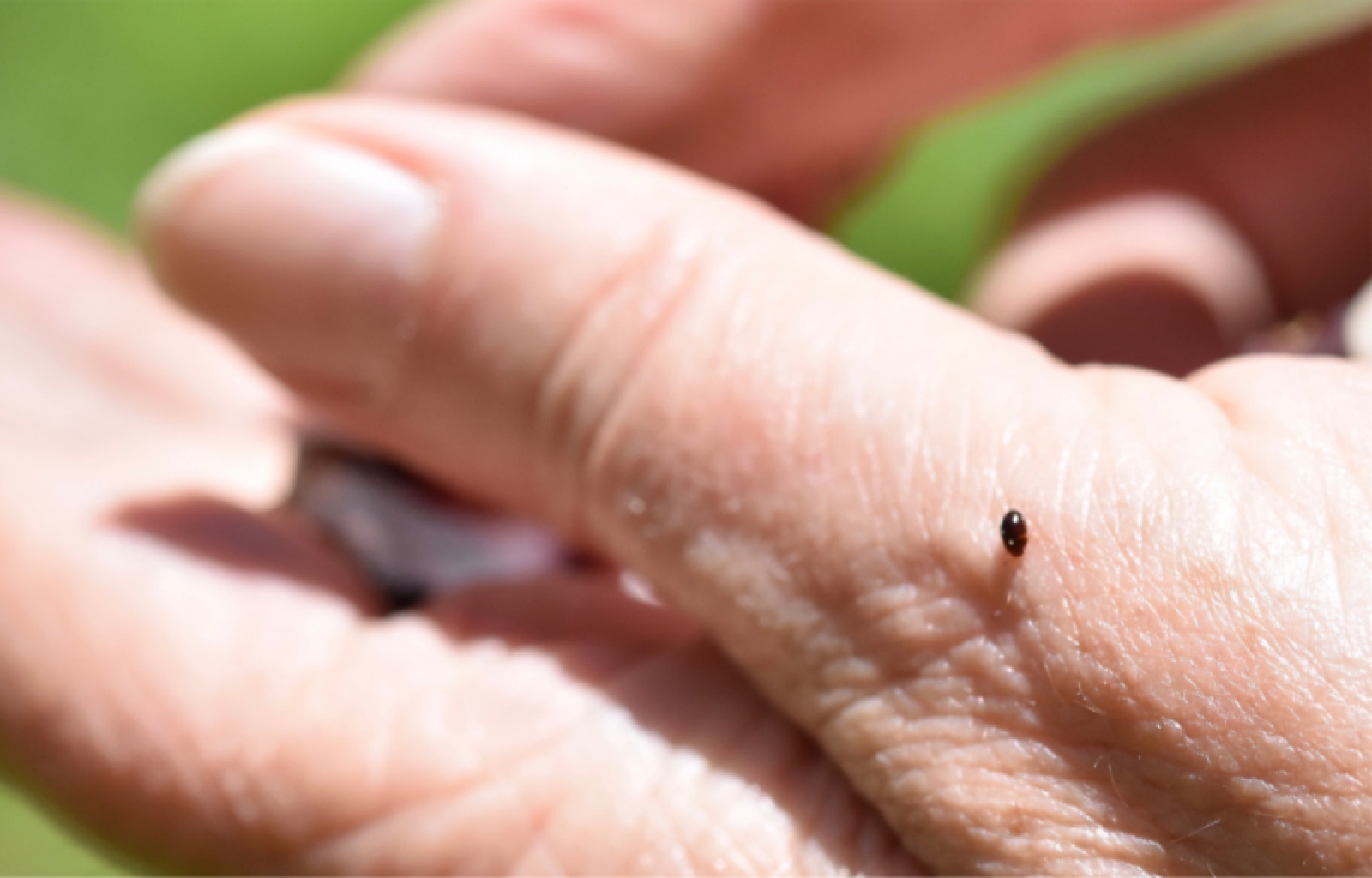
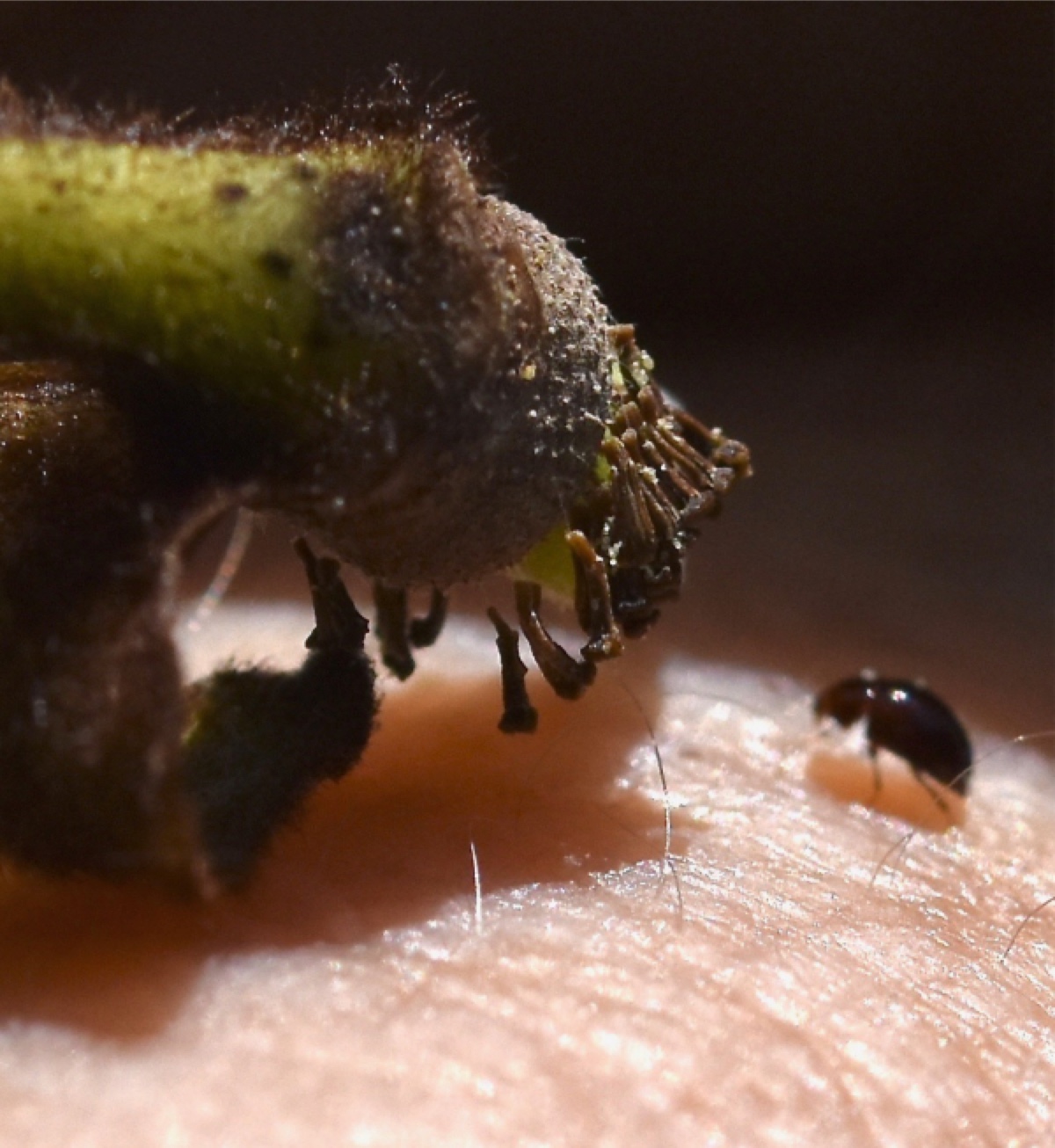
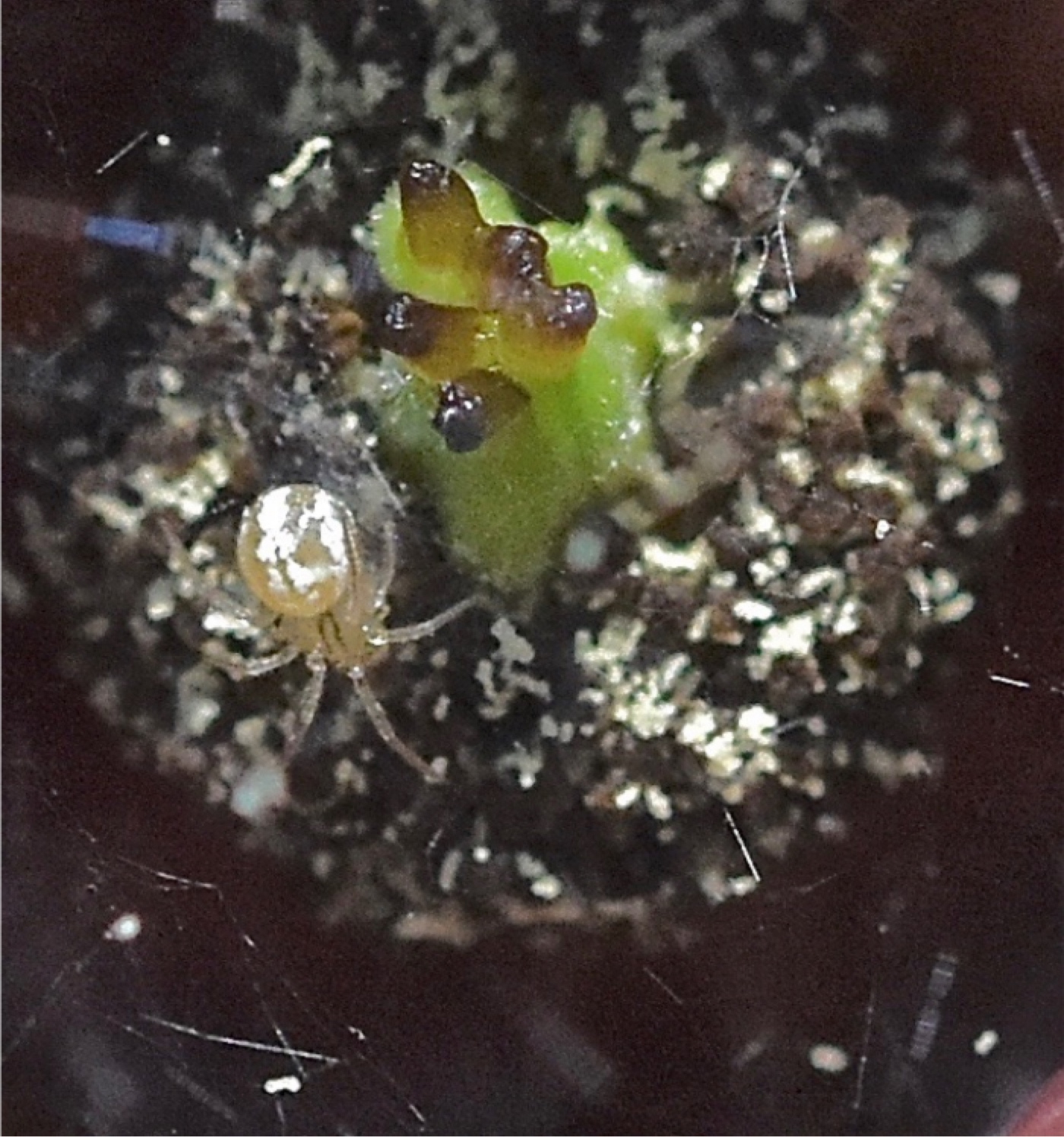
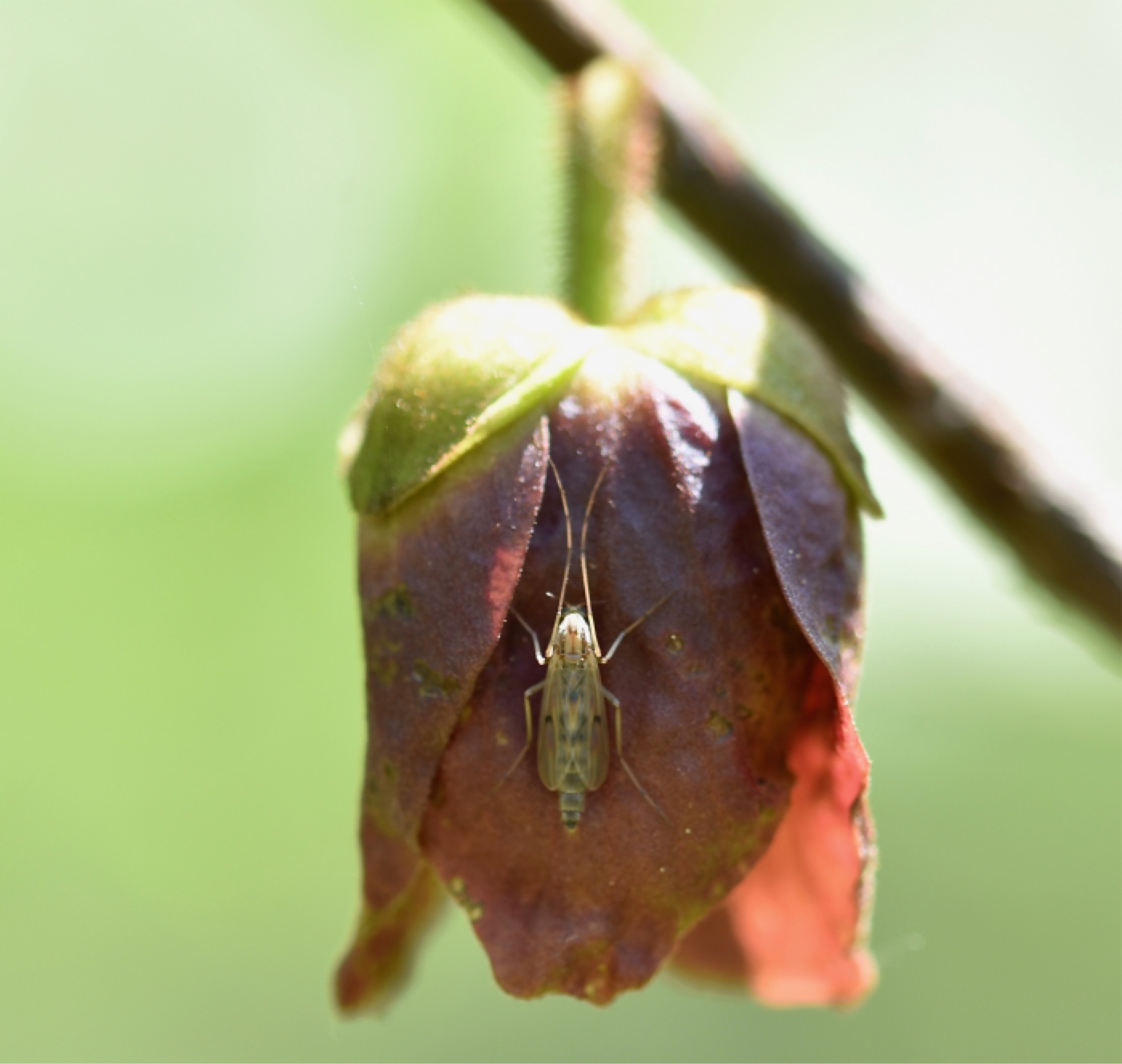
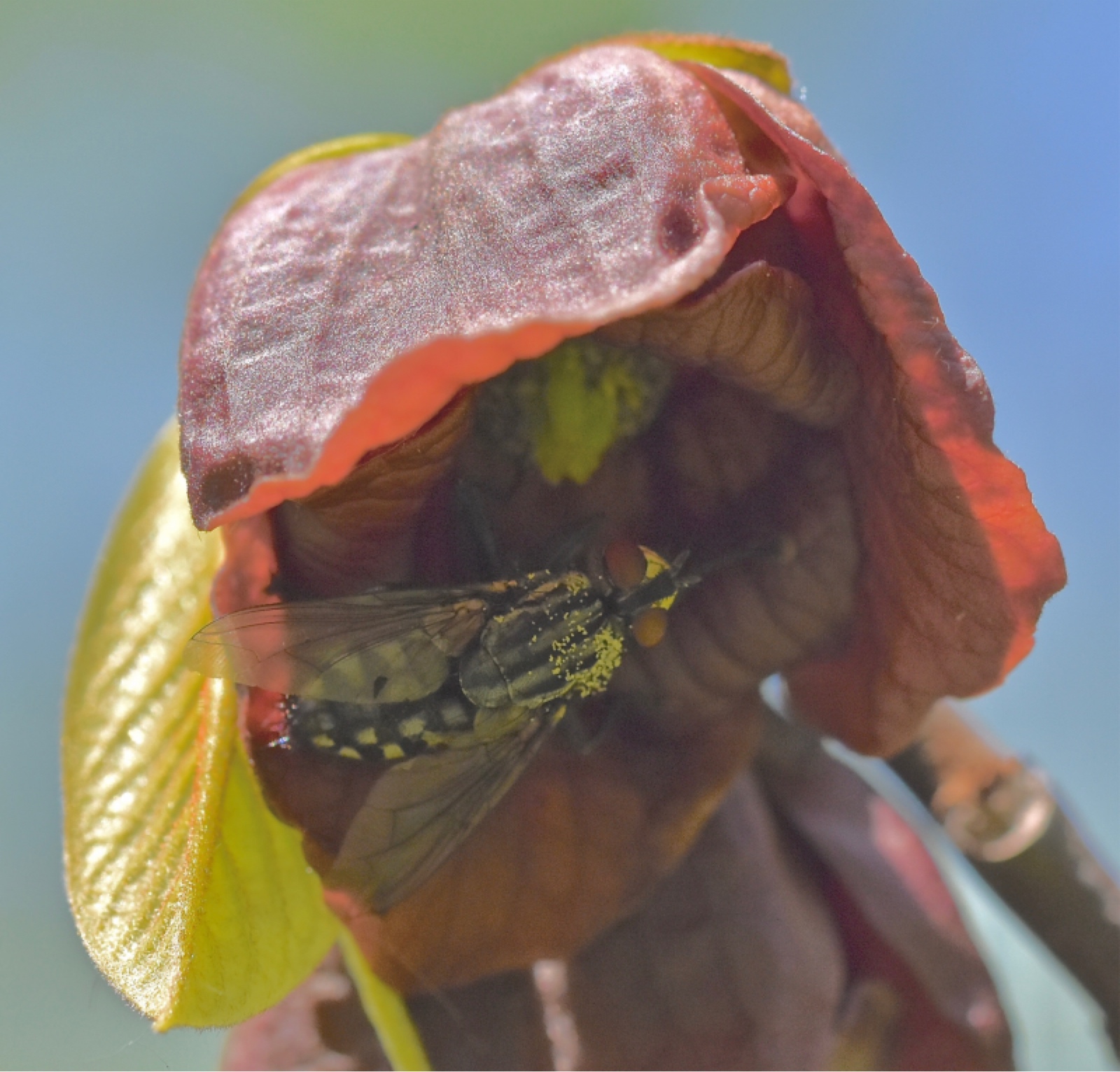
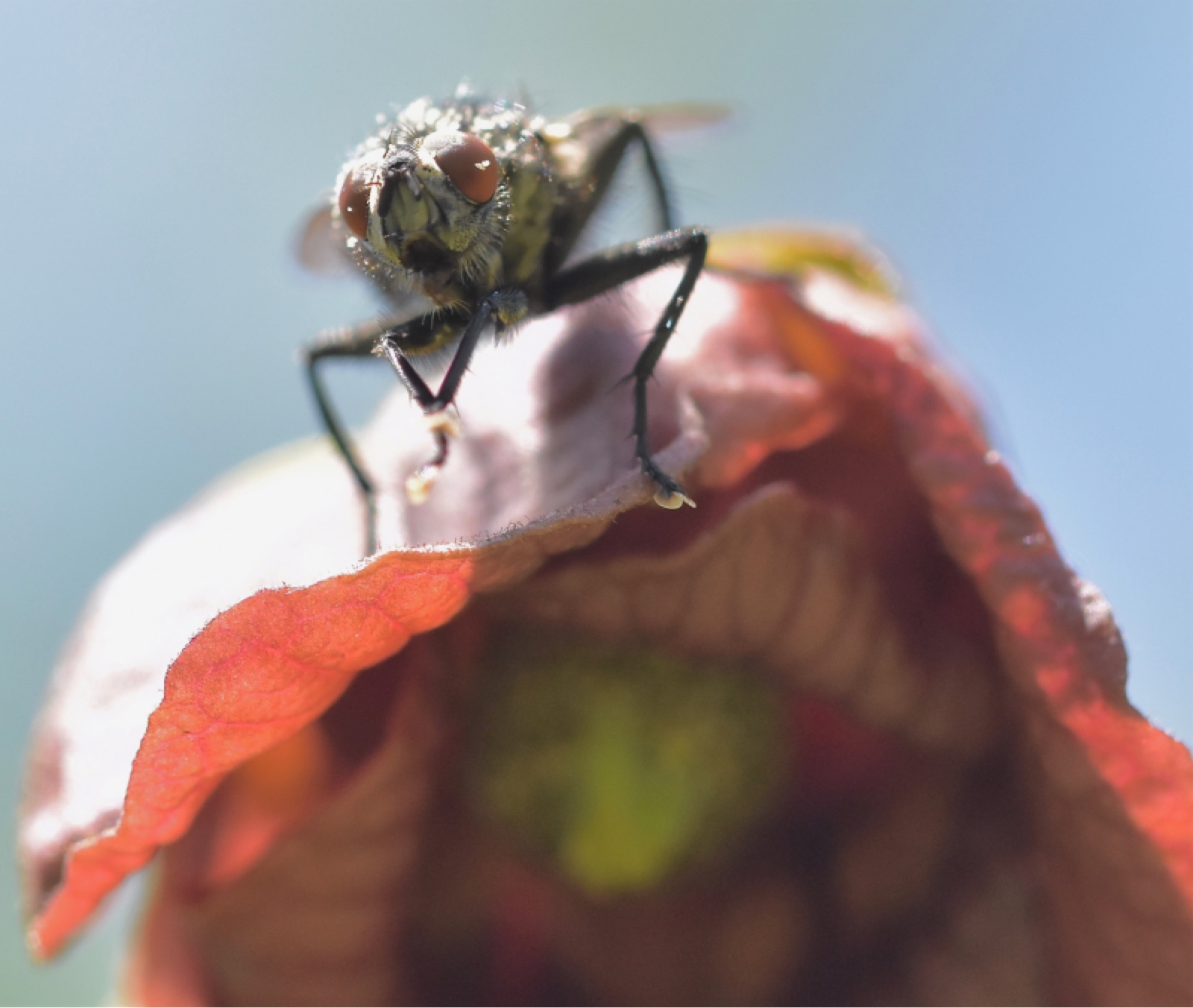
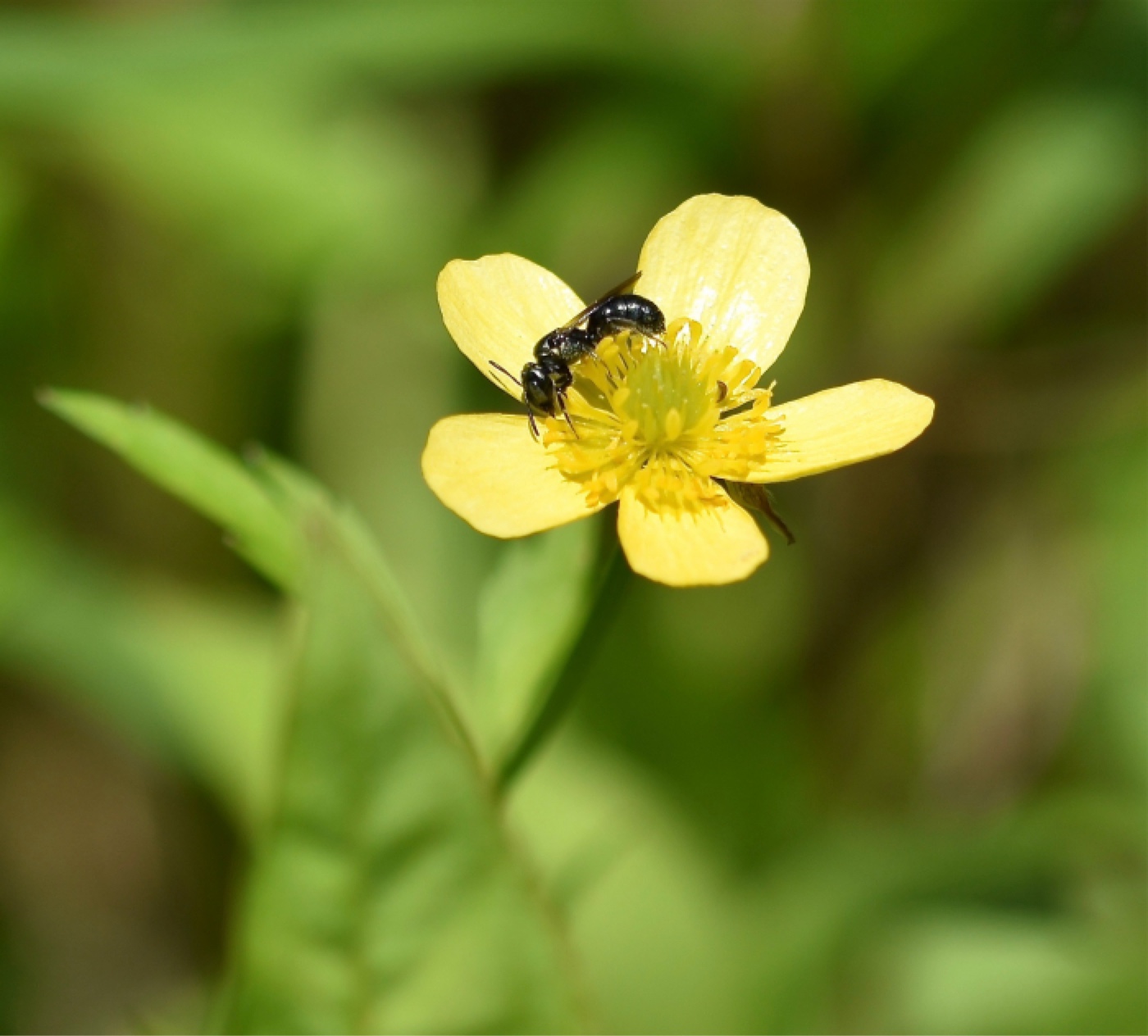
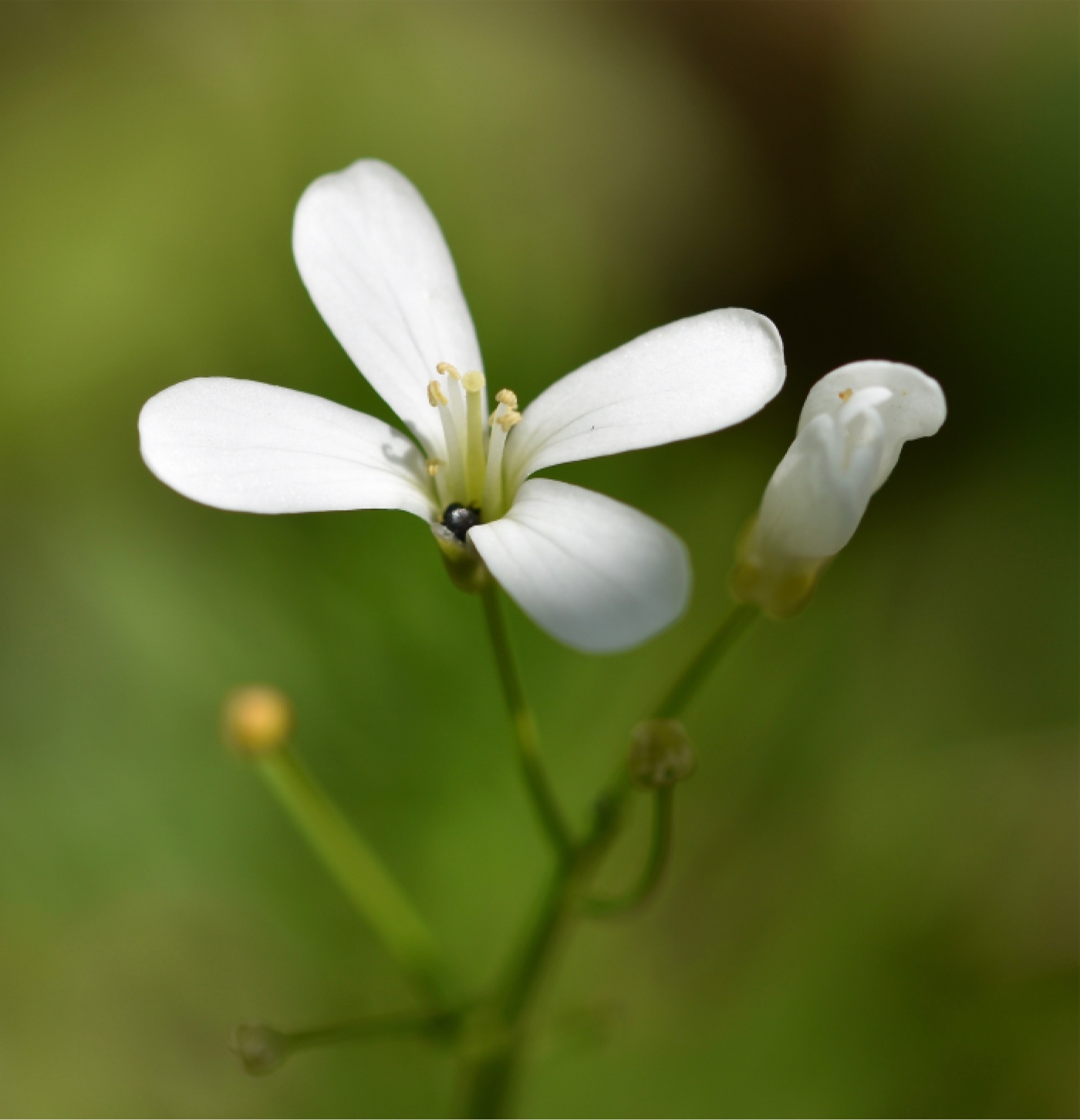
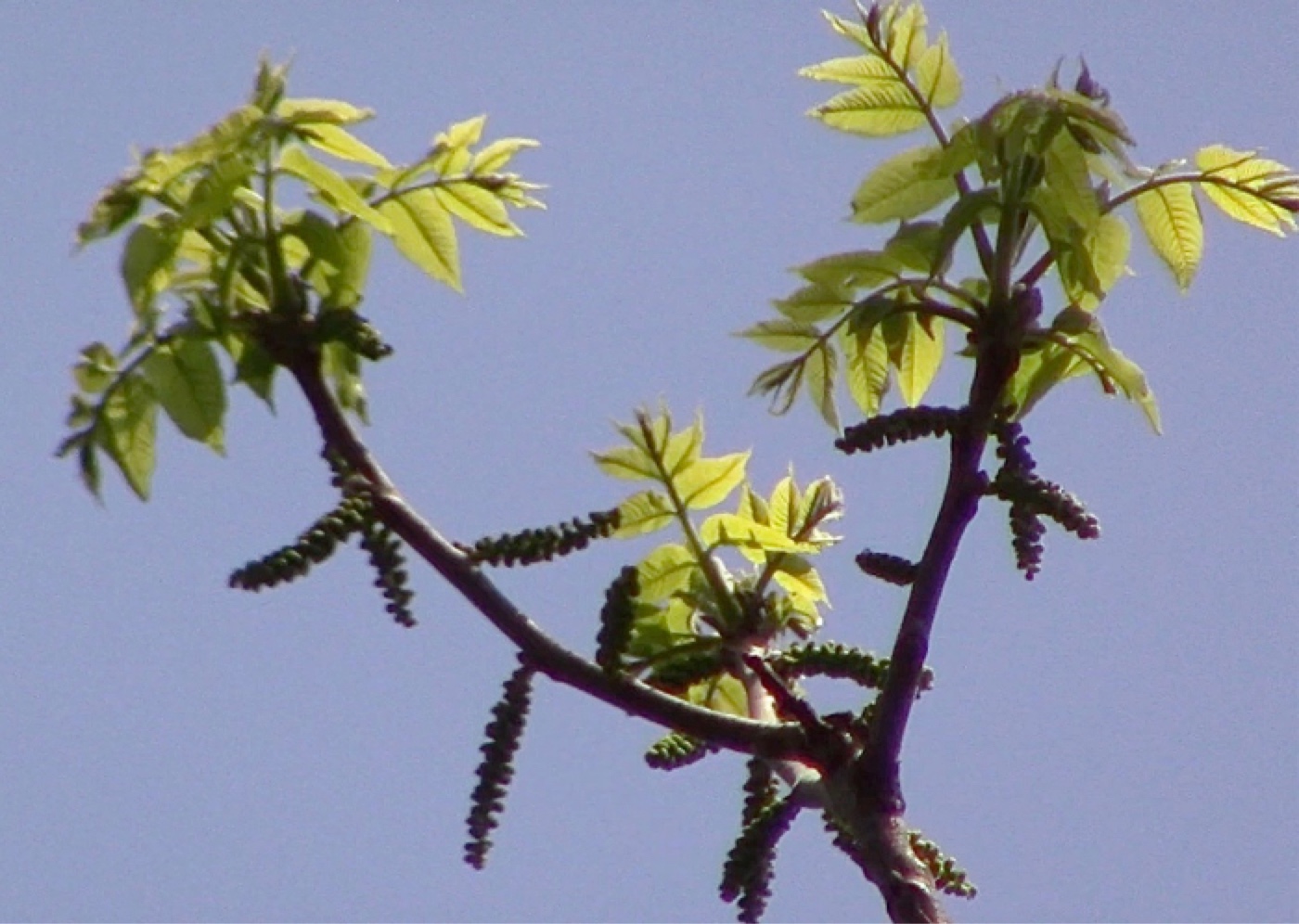
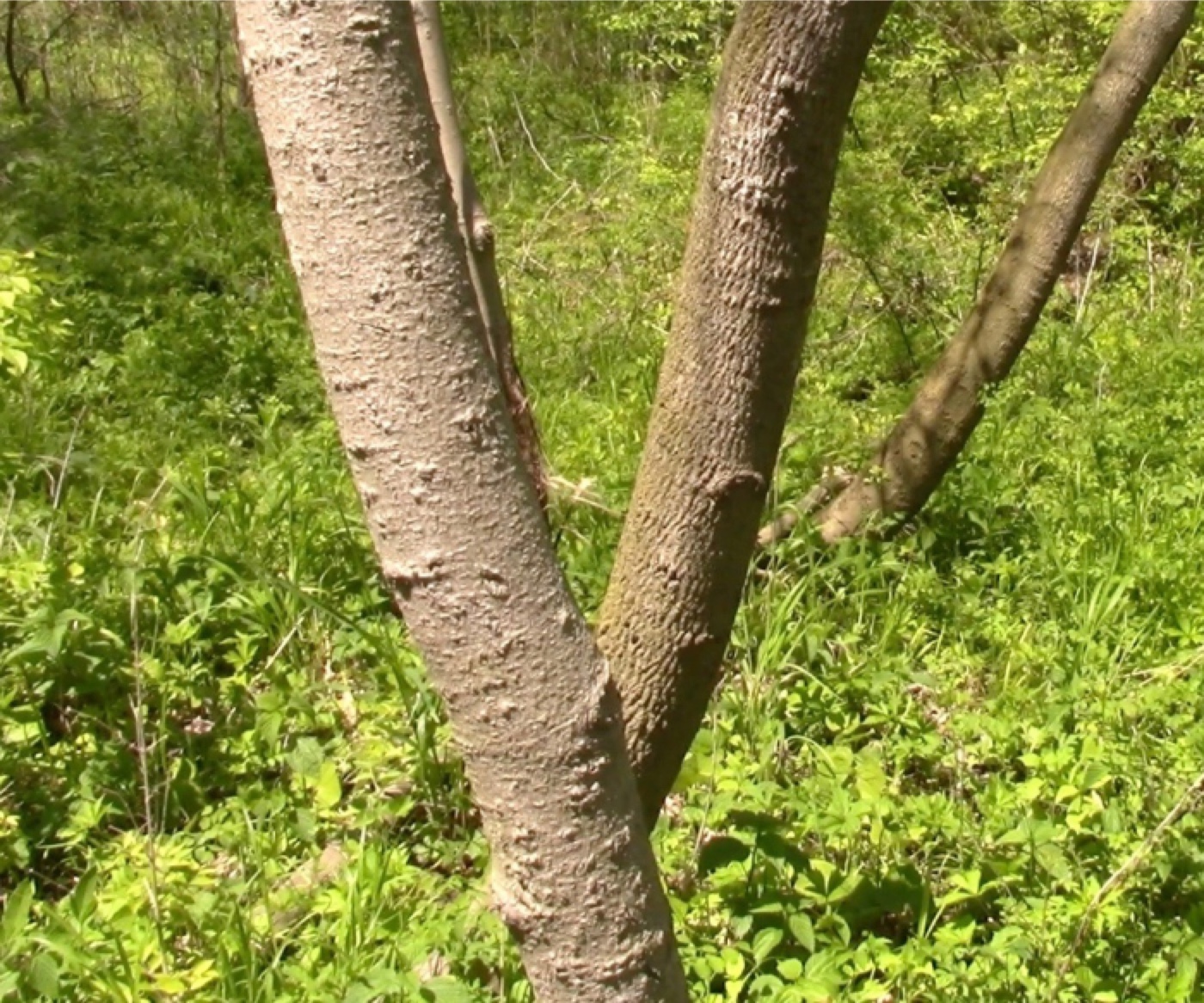
Draper-Houston Preserve • 2 May 2021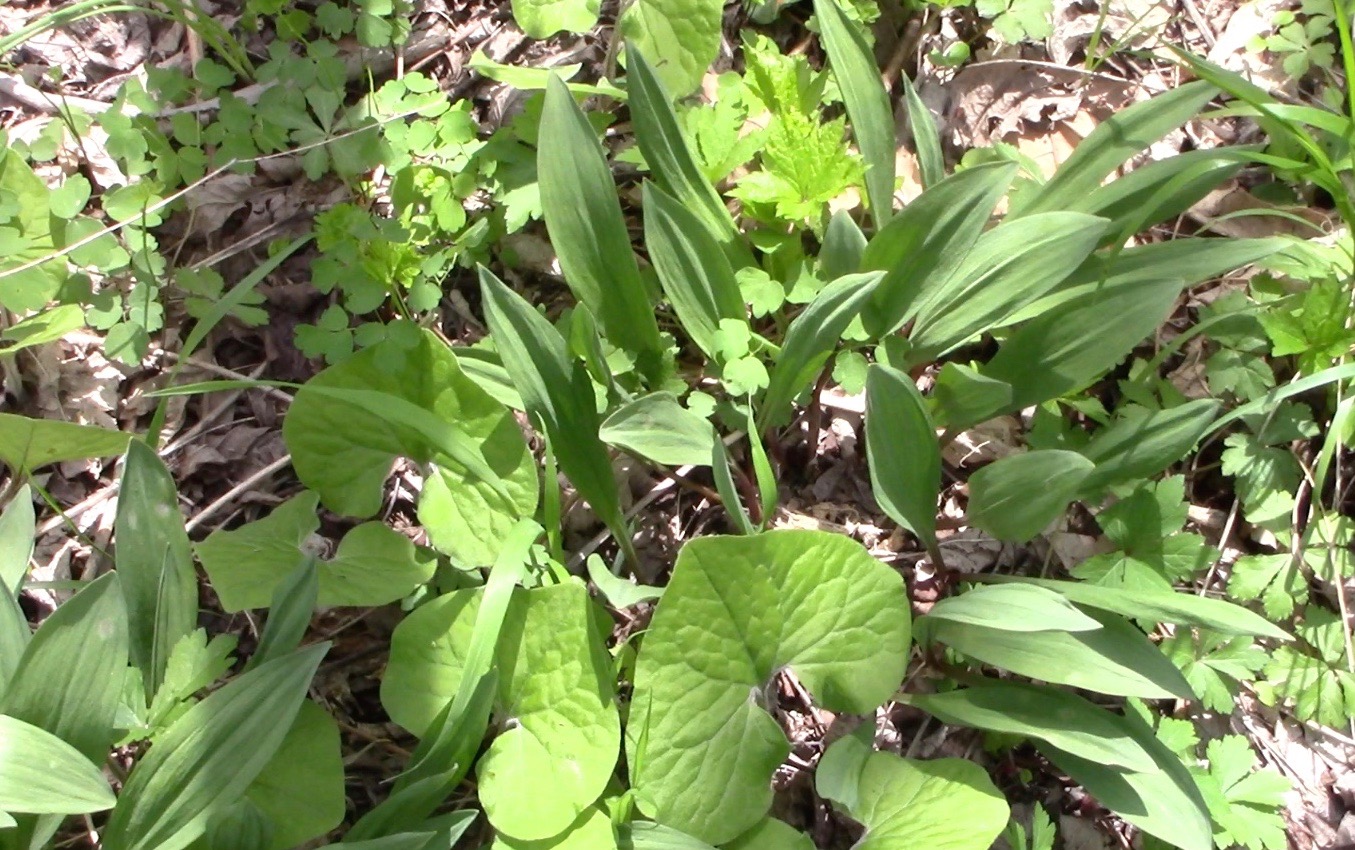
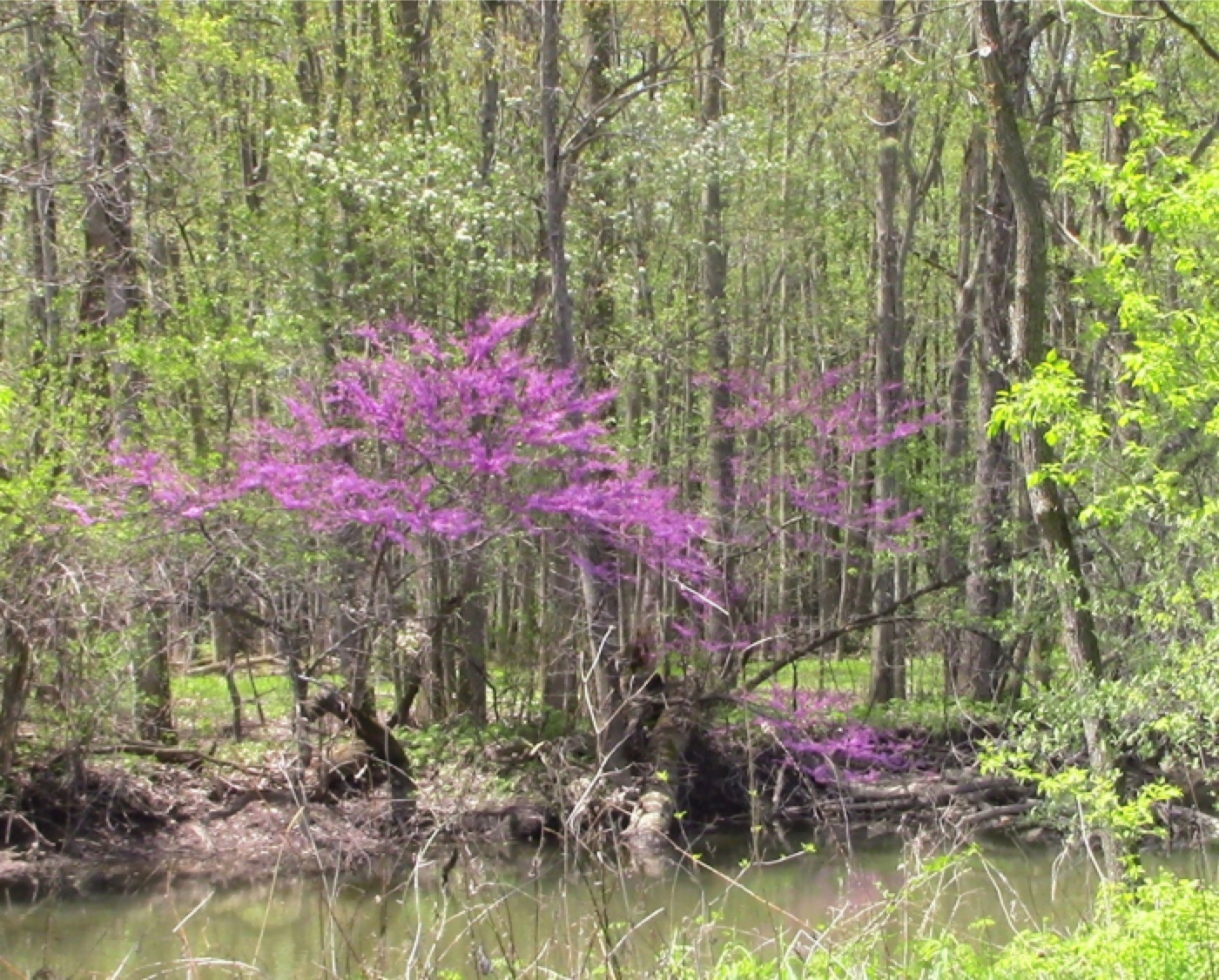
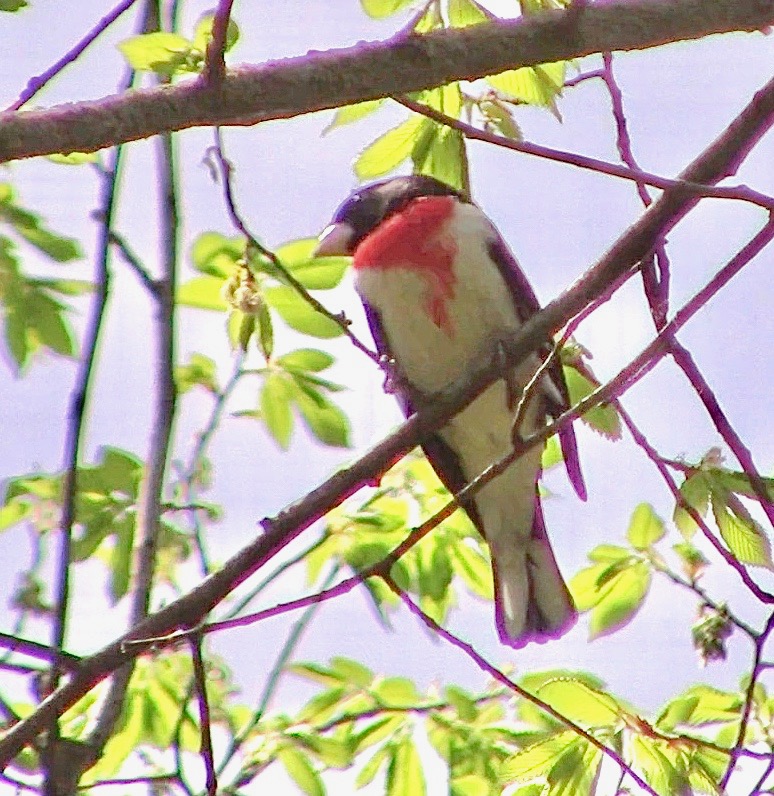
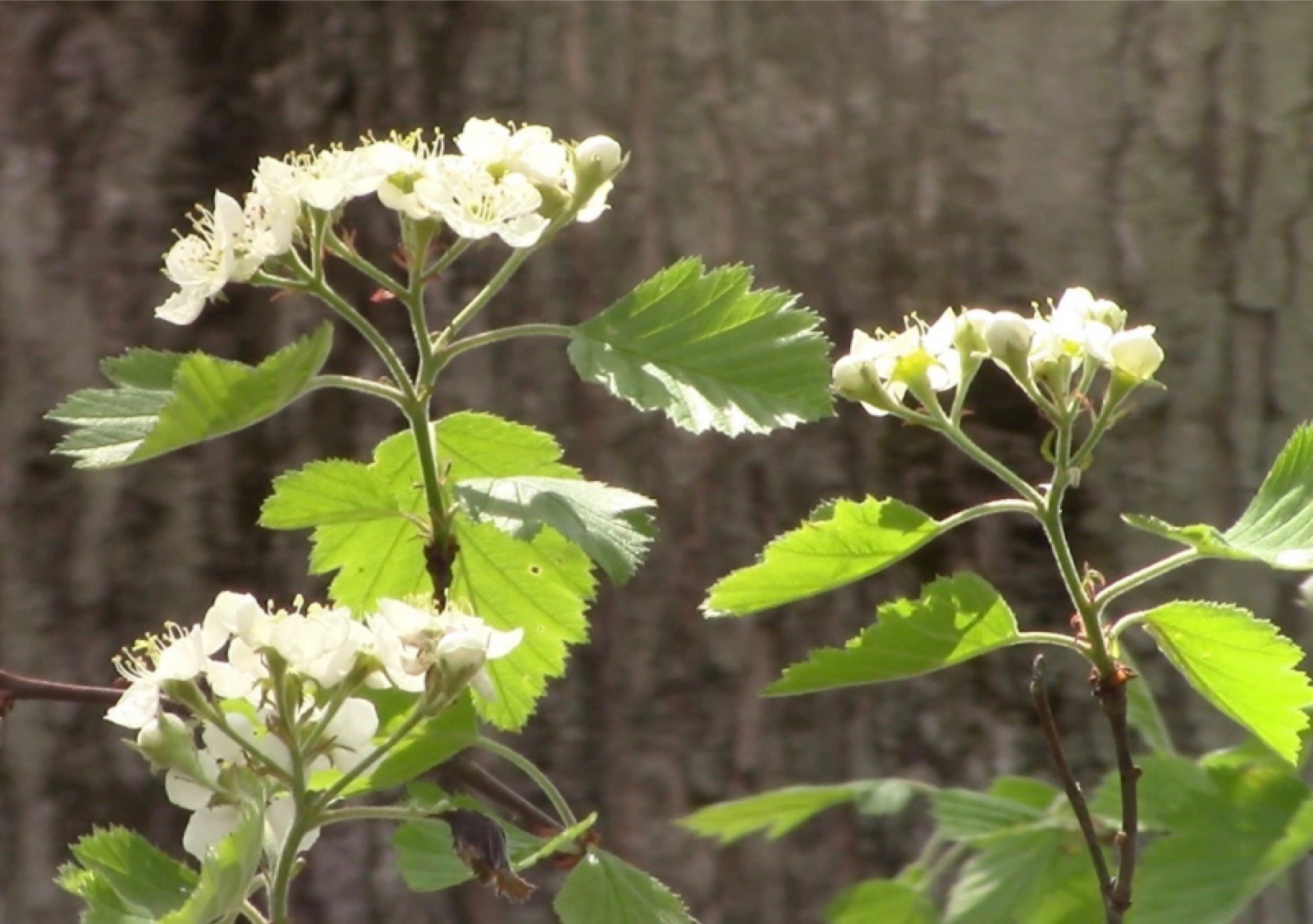
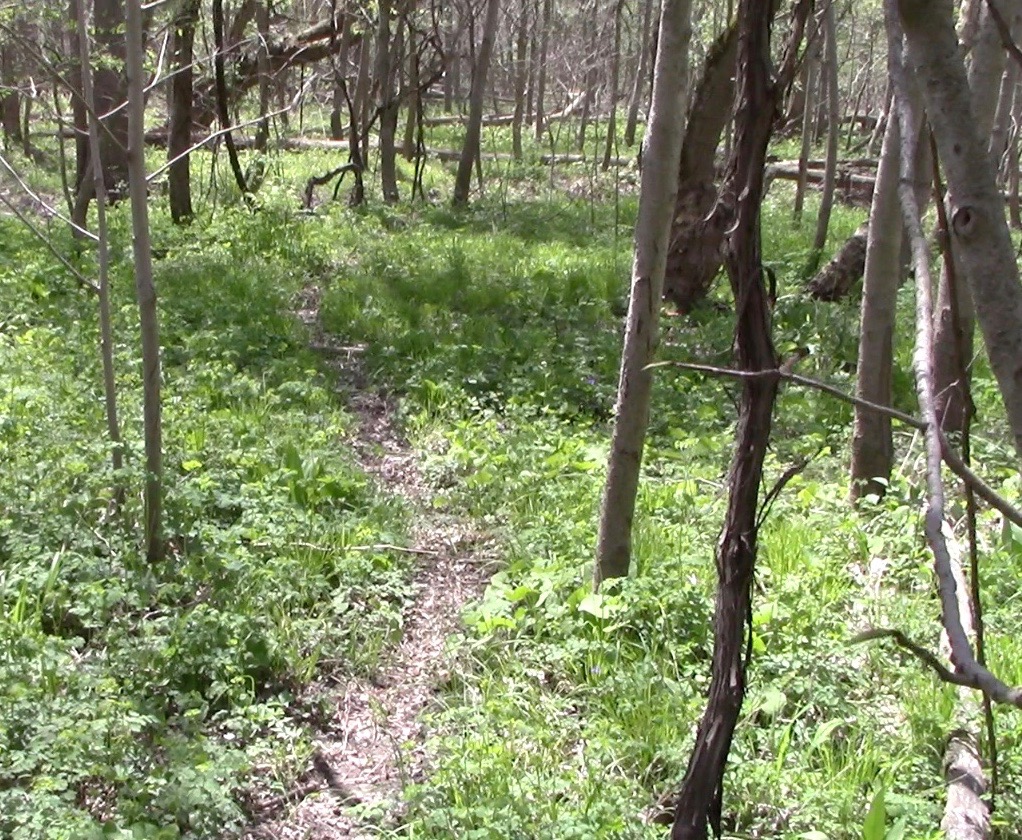
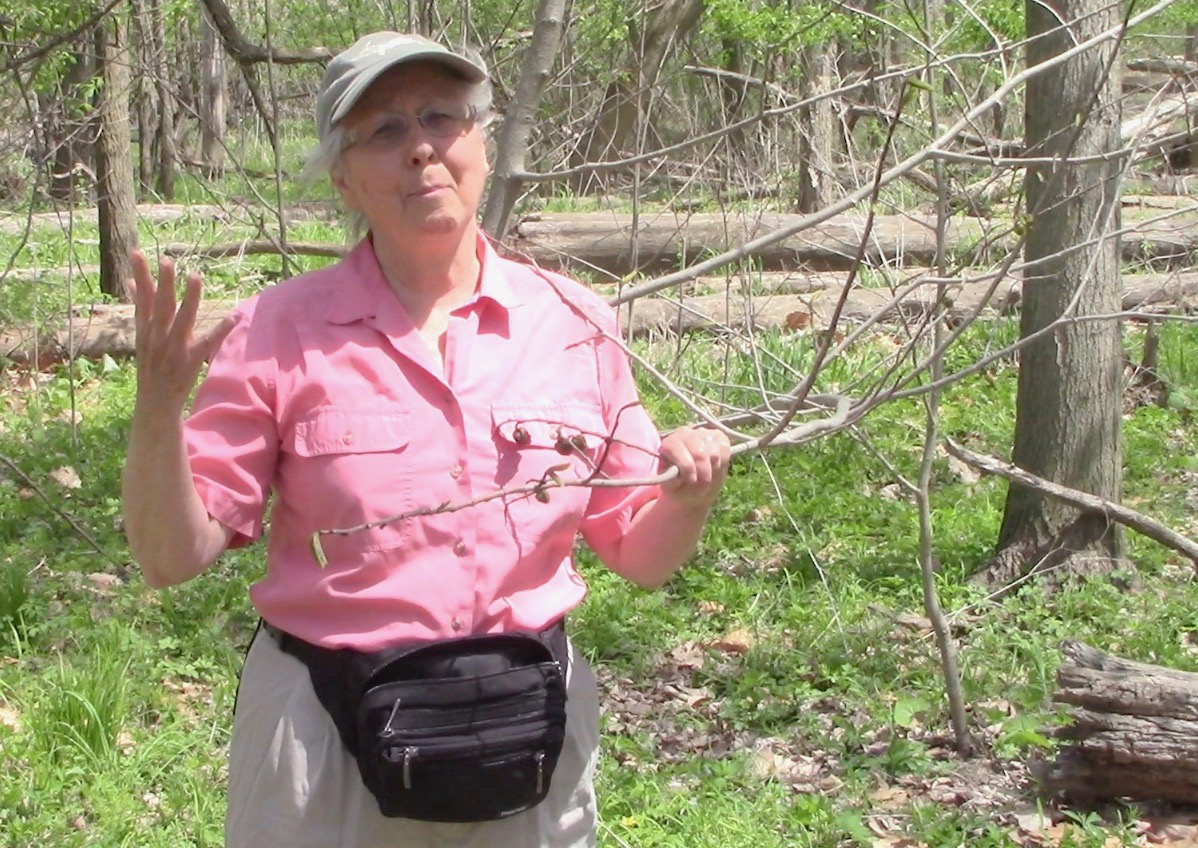
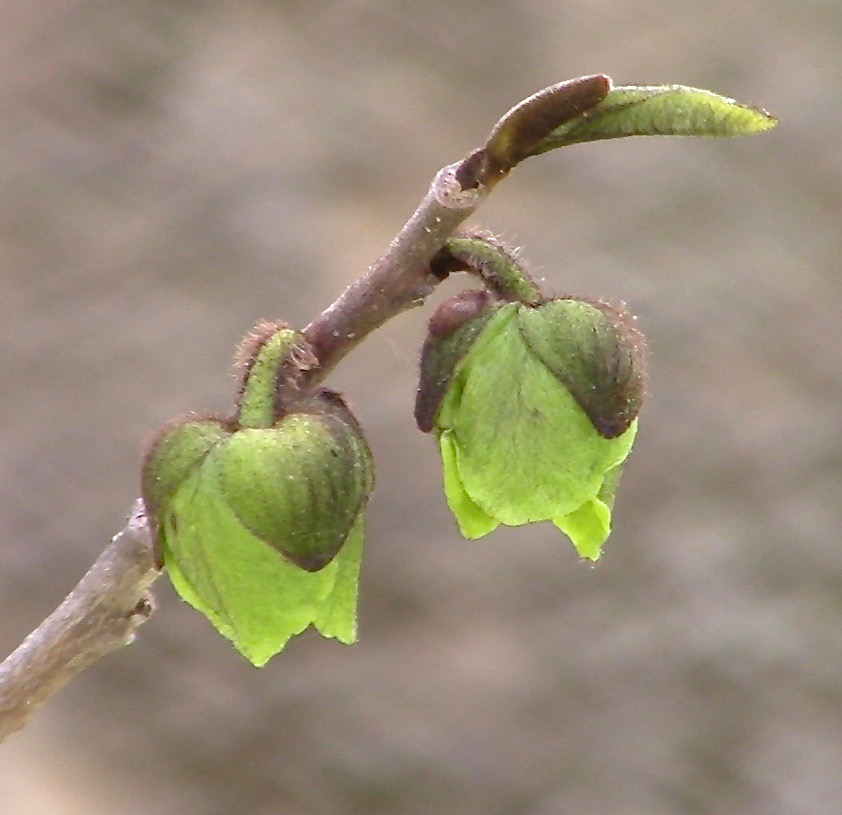
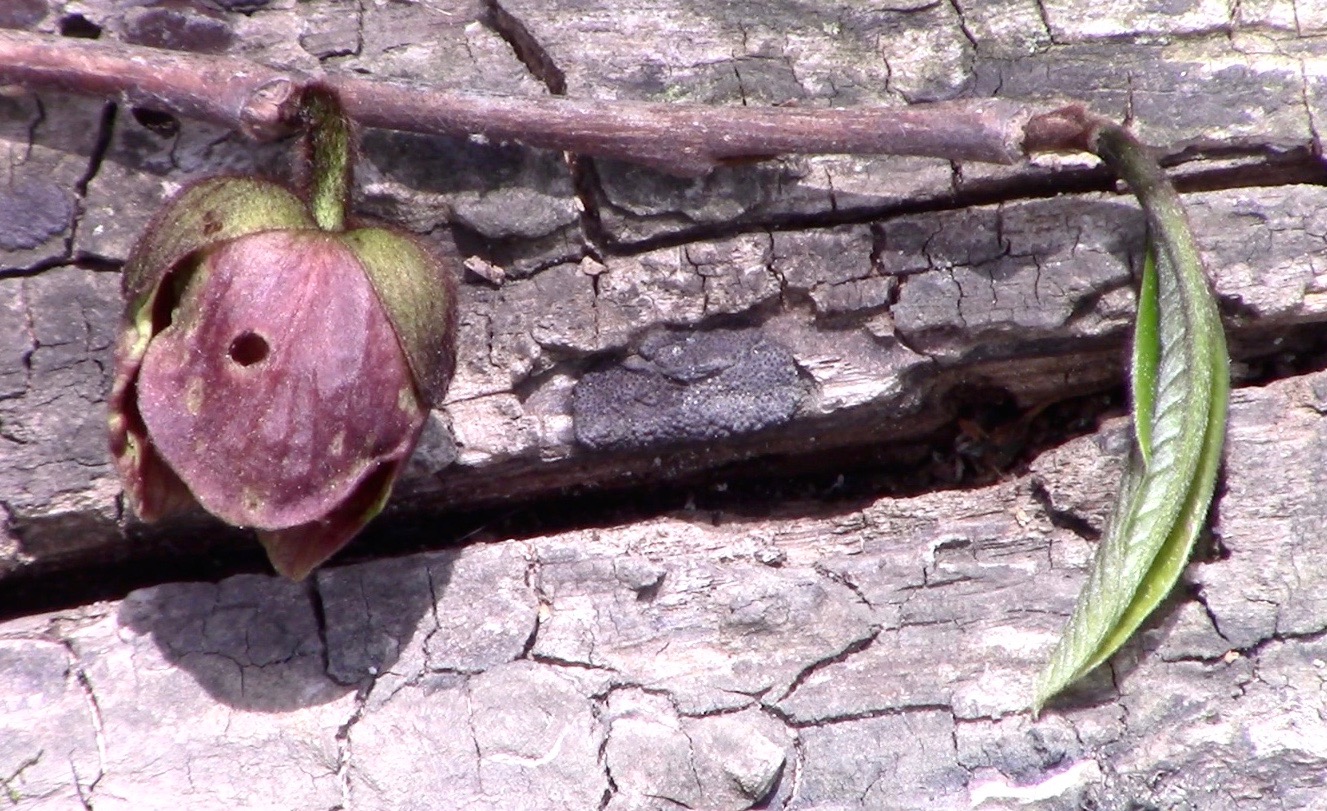
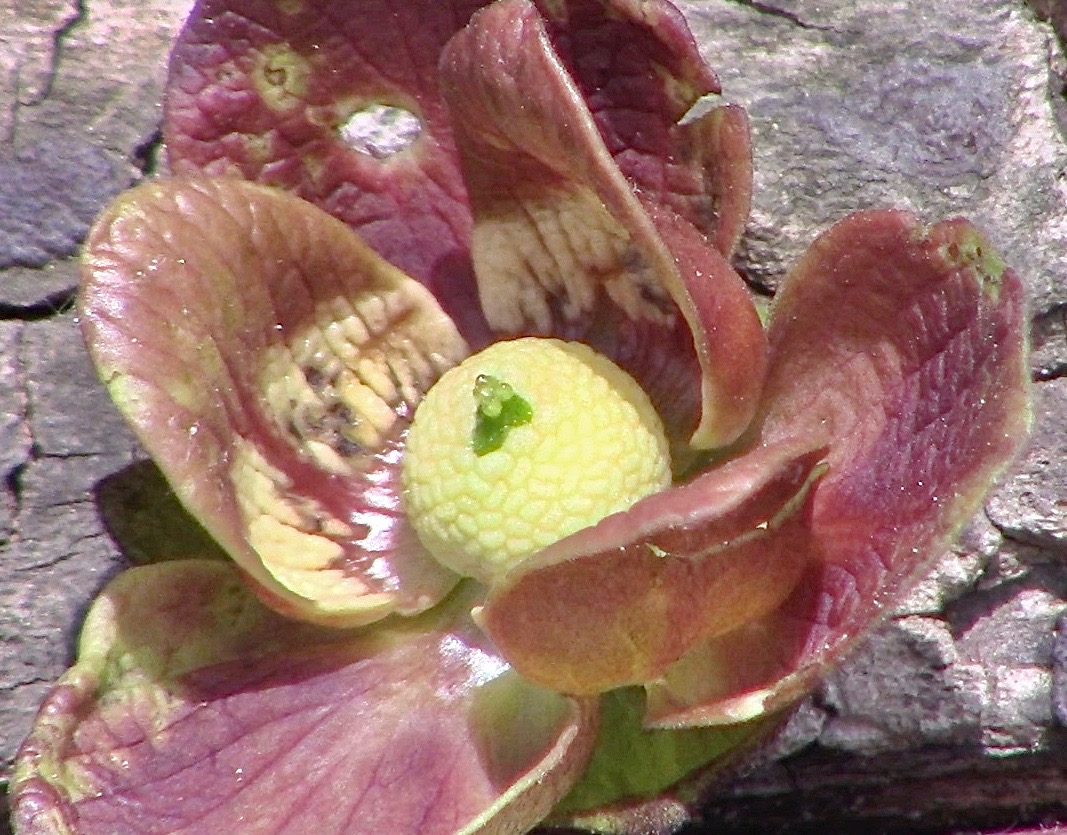
Video and video stills: Connie Barlow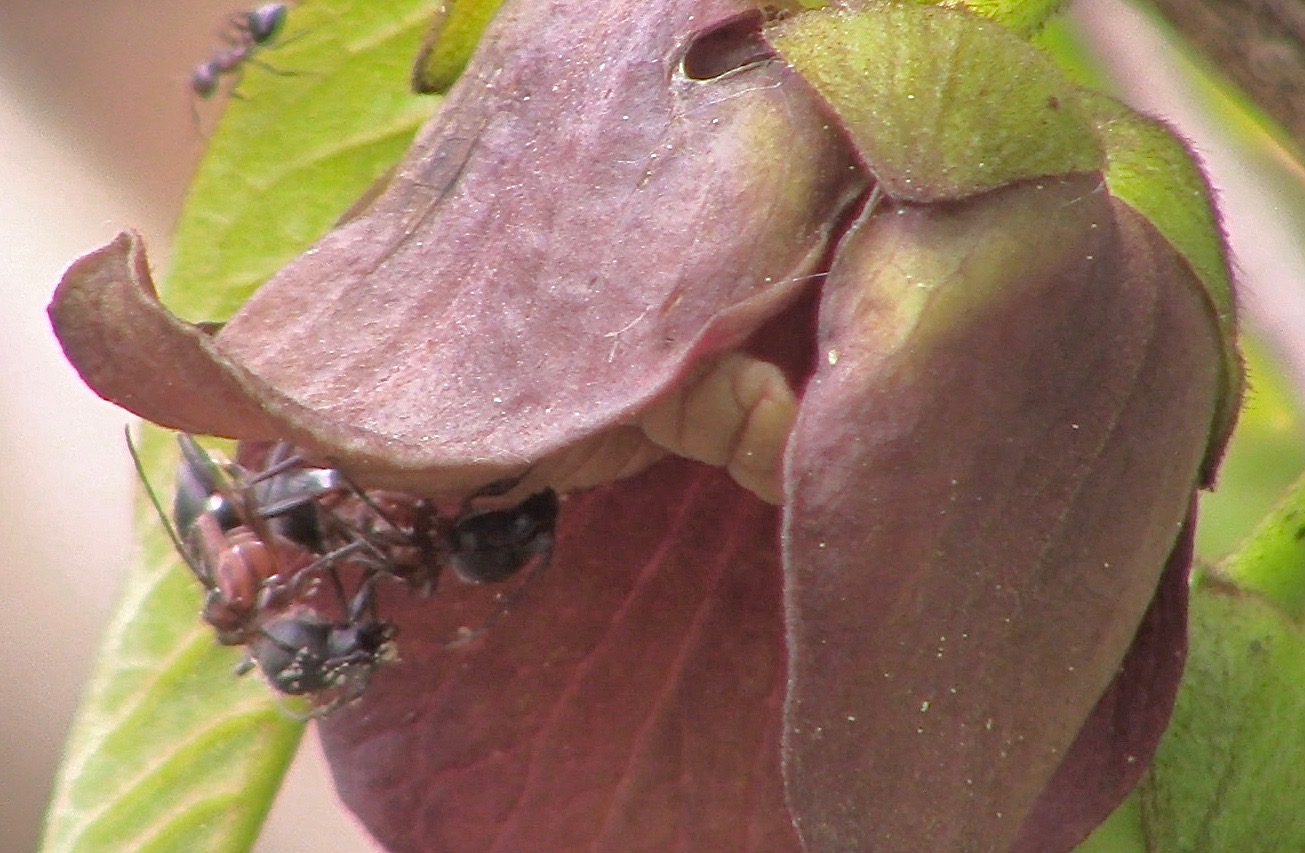
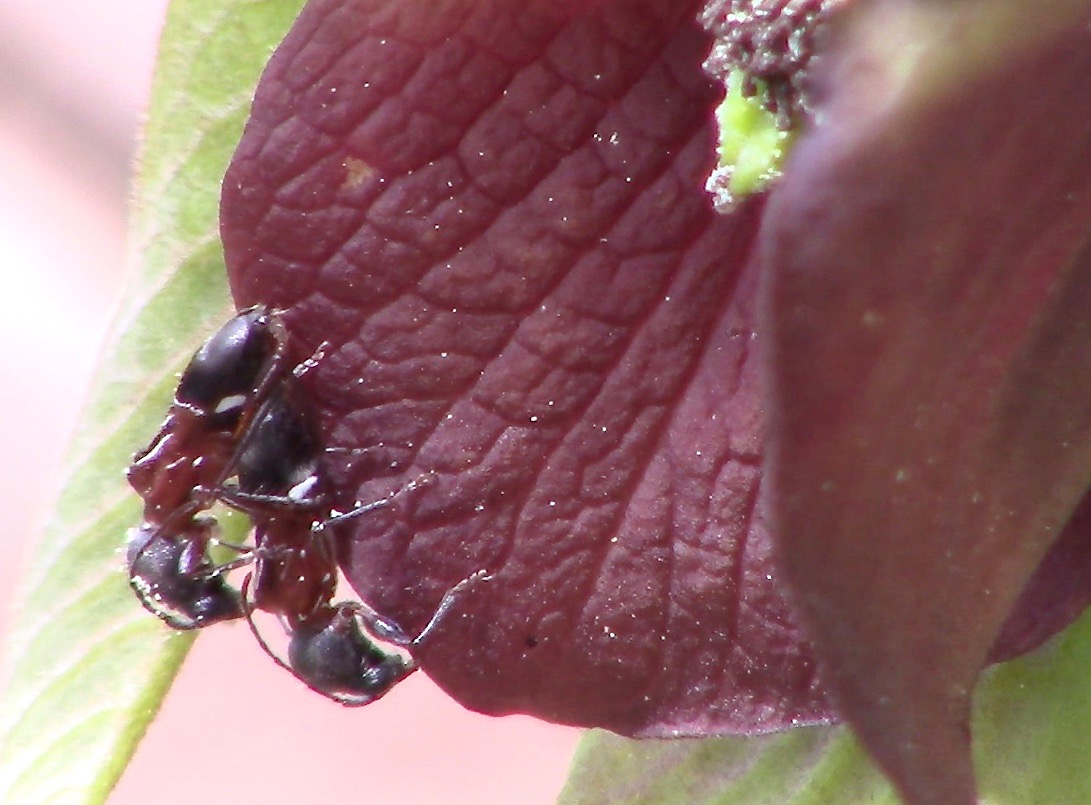
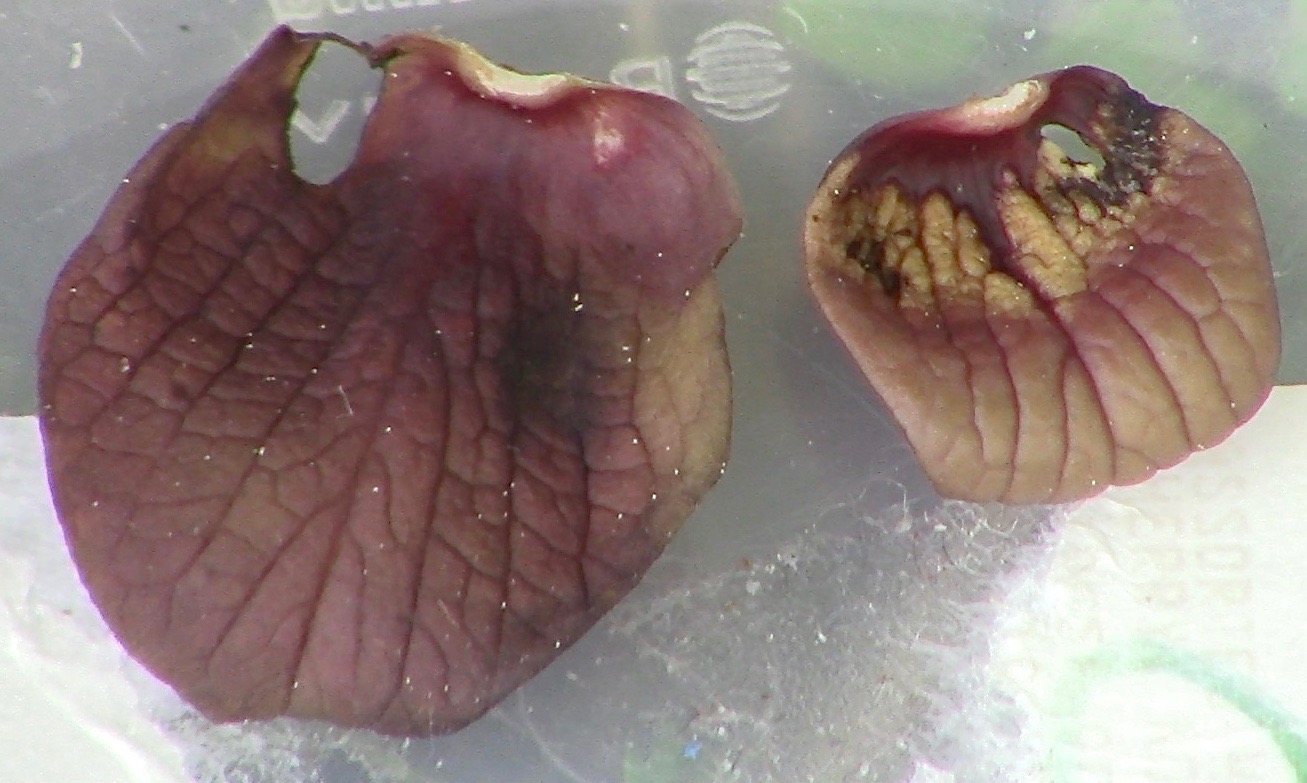
ABOVE: I assumed that this pair of insects were large ants (notice the small ant at upper edge of photo above left). Then they flew, so they must be wasp-like insects.
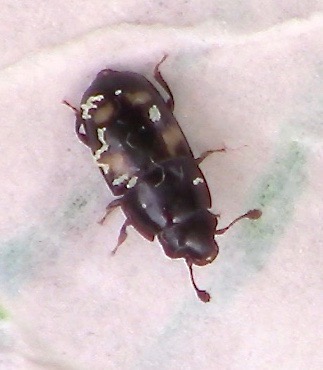
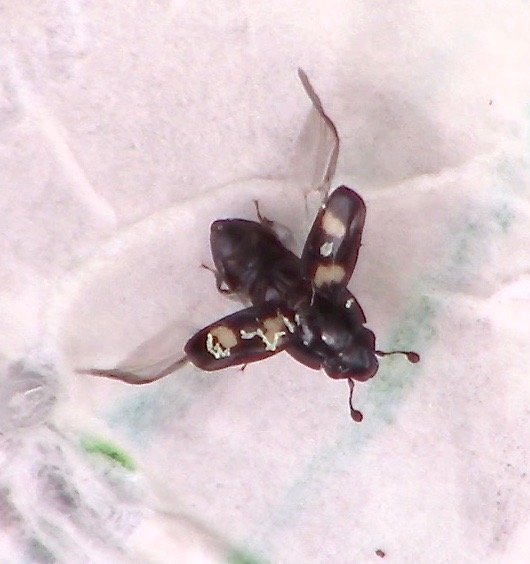
Because I had a video camera, I was able to capture a frame when the largest of the 2 beetle species of the same darkness and form prepared to take flight.
Video and video stills: Connie Barlow
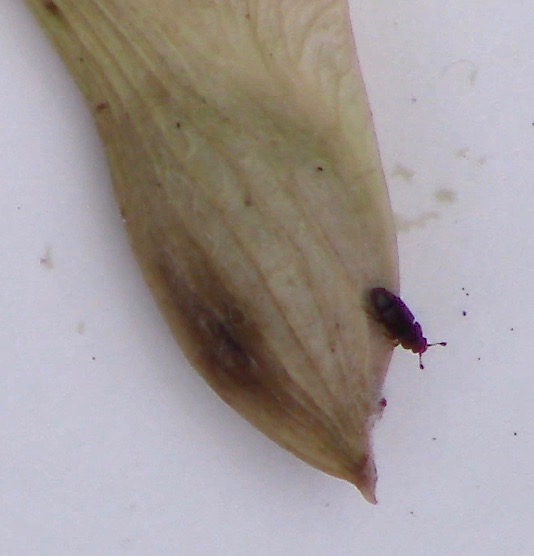
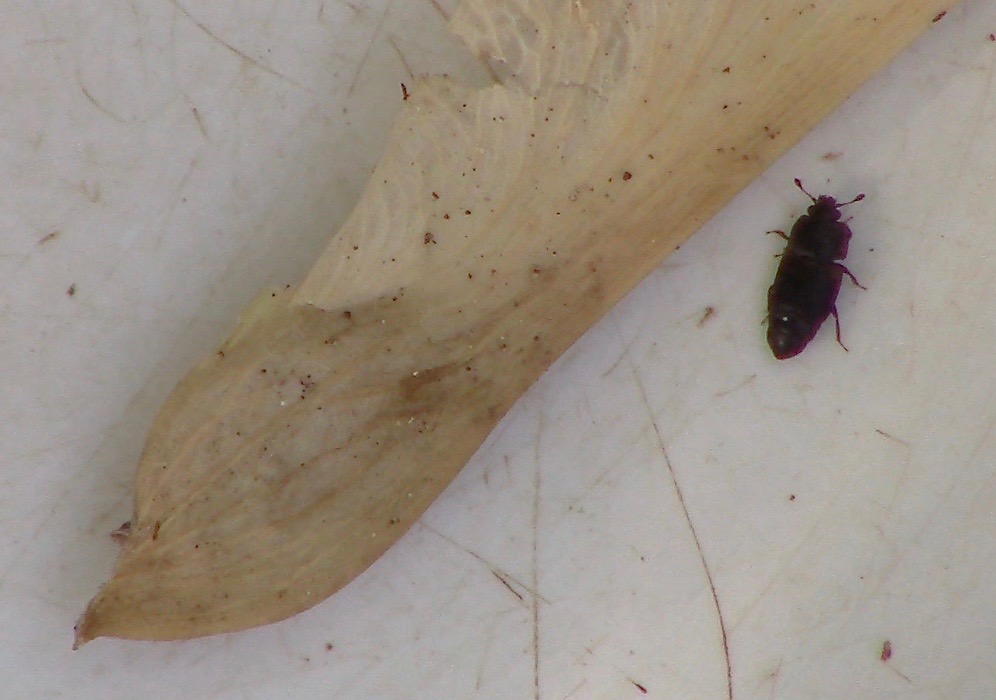
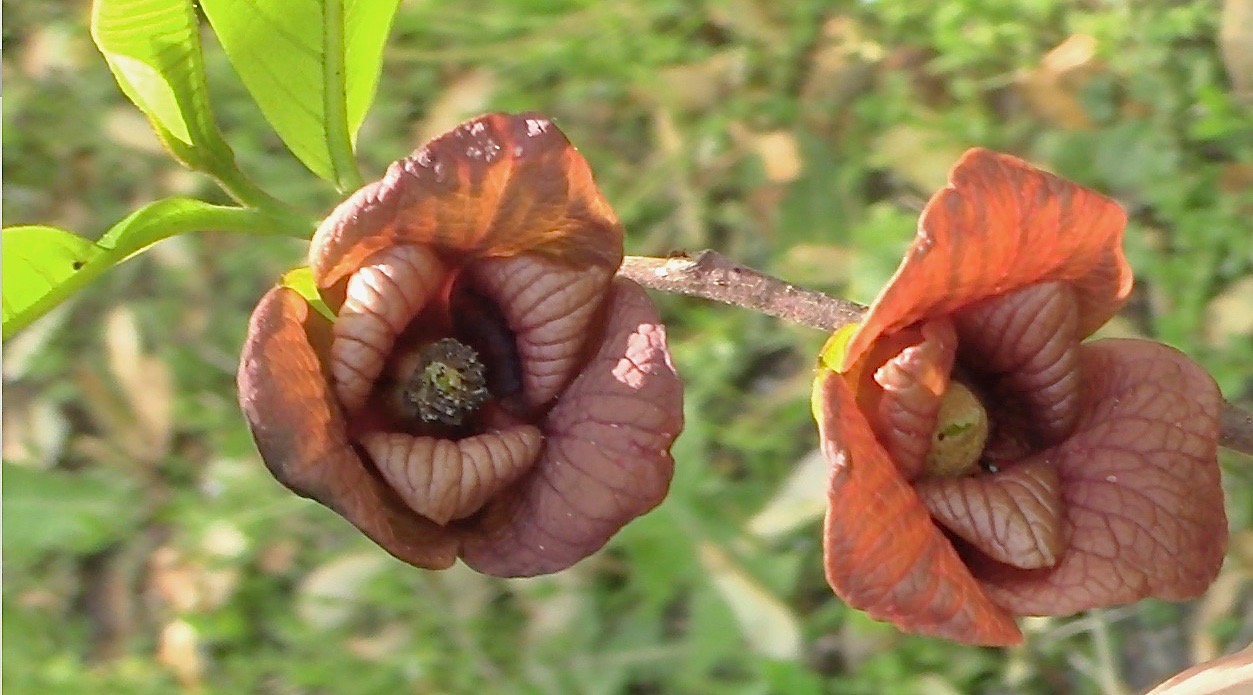
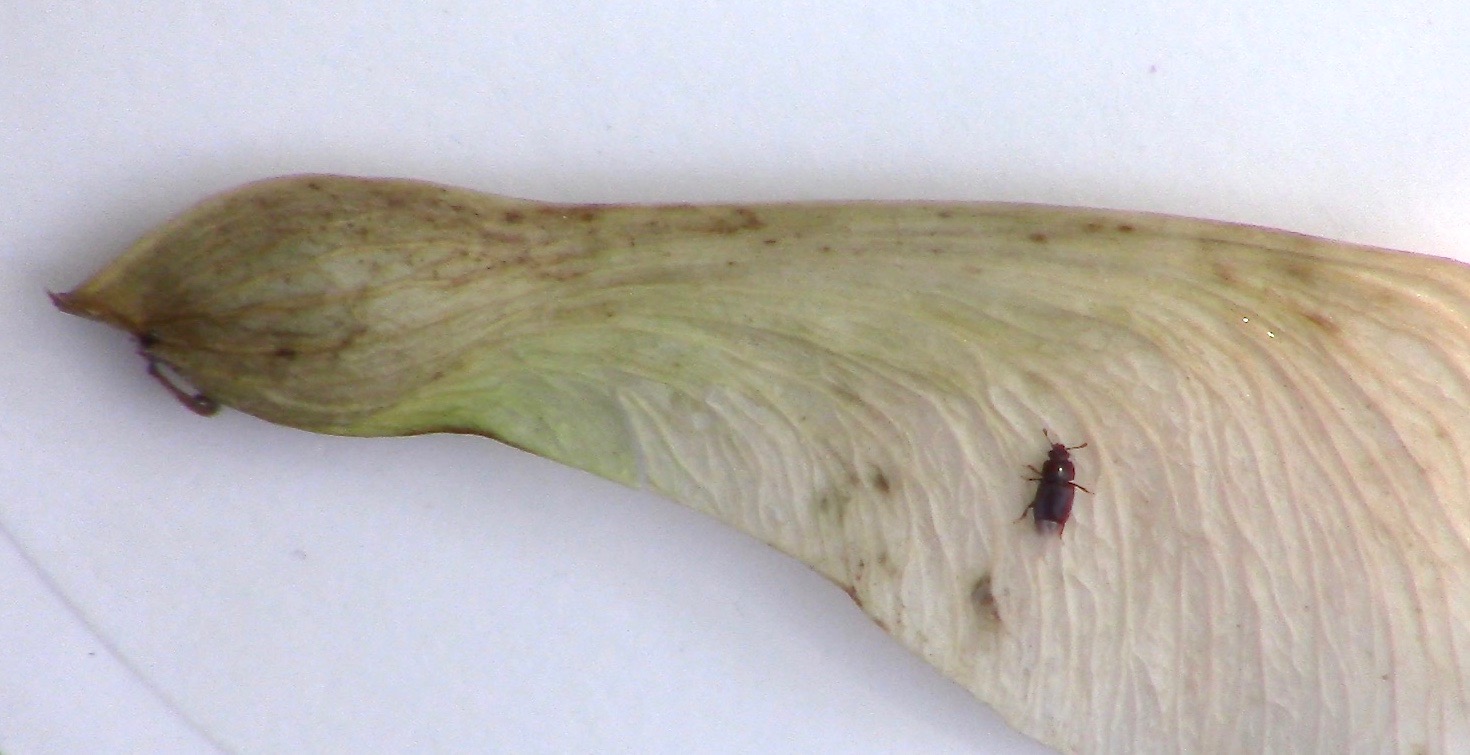
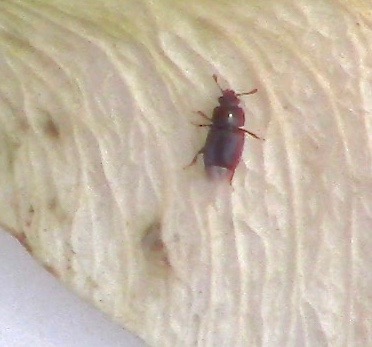
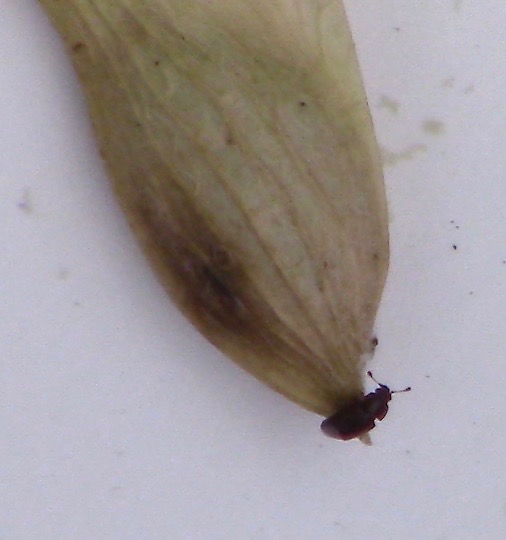
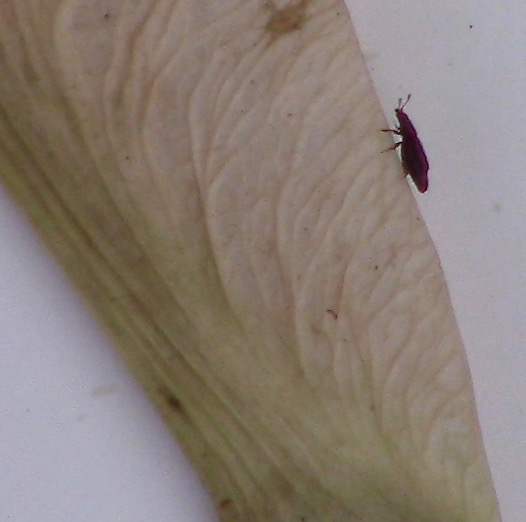
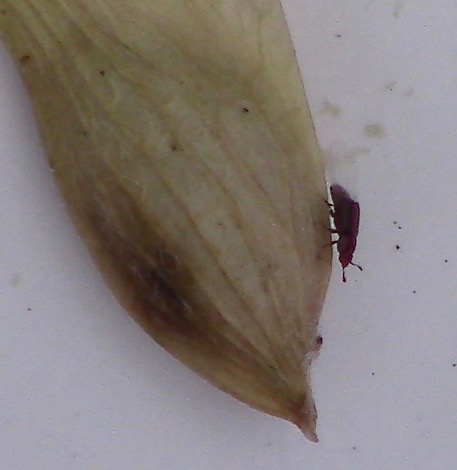
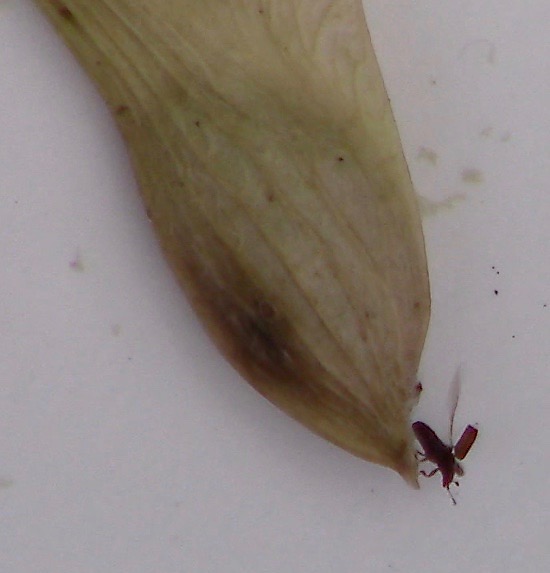
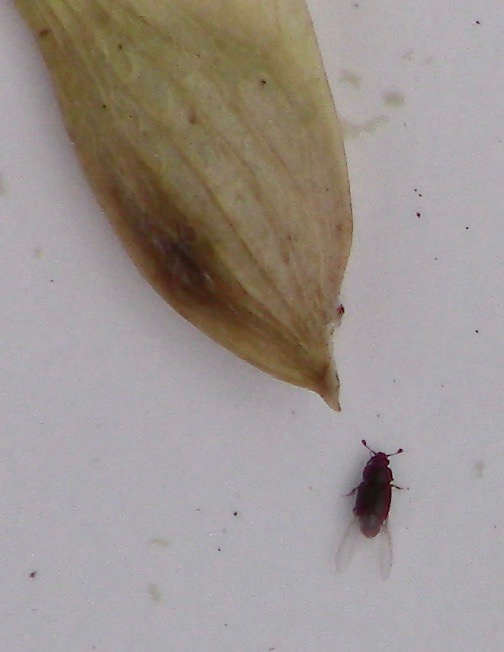
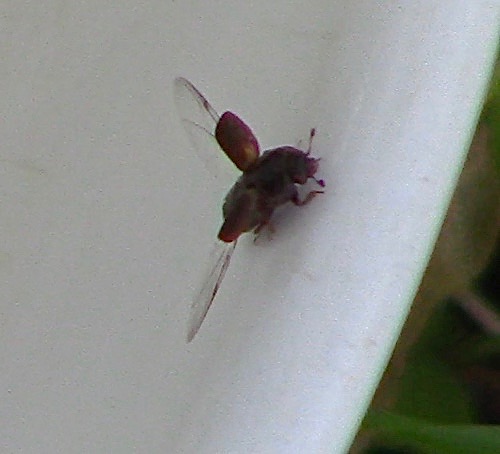
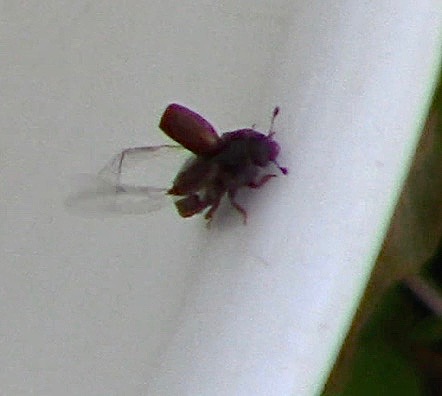

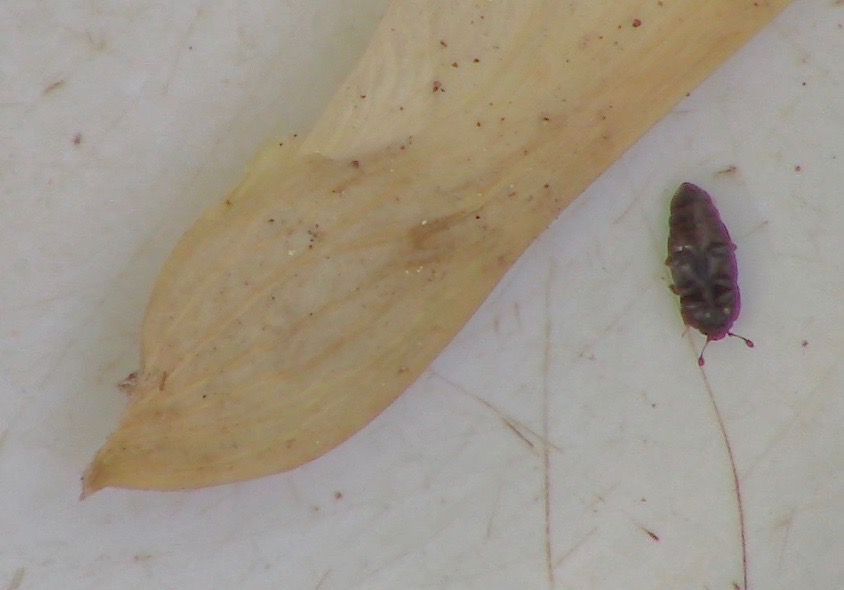
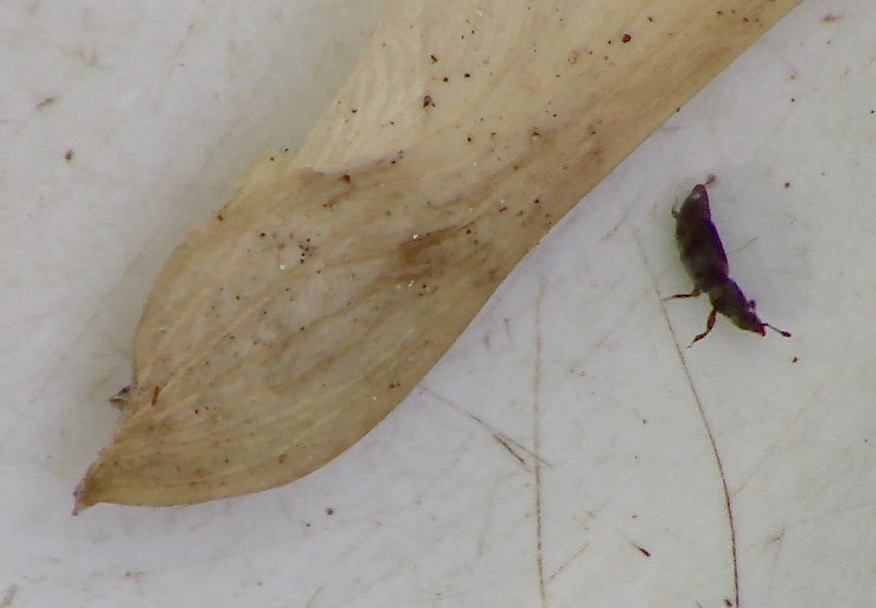
Video and video stills by Connie Barlow • hi-res photography by Dallas Ford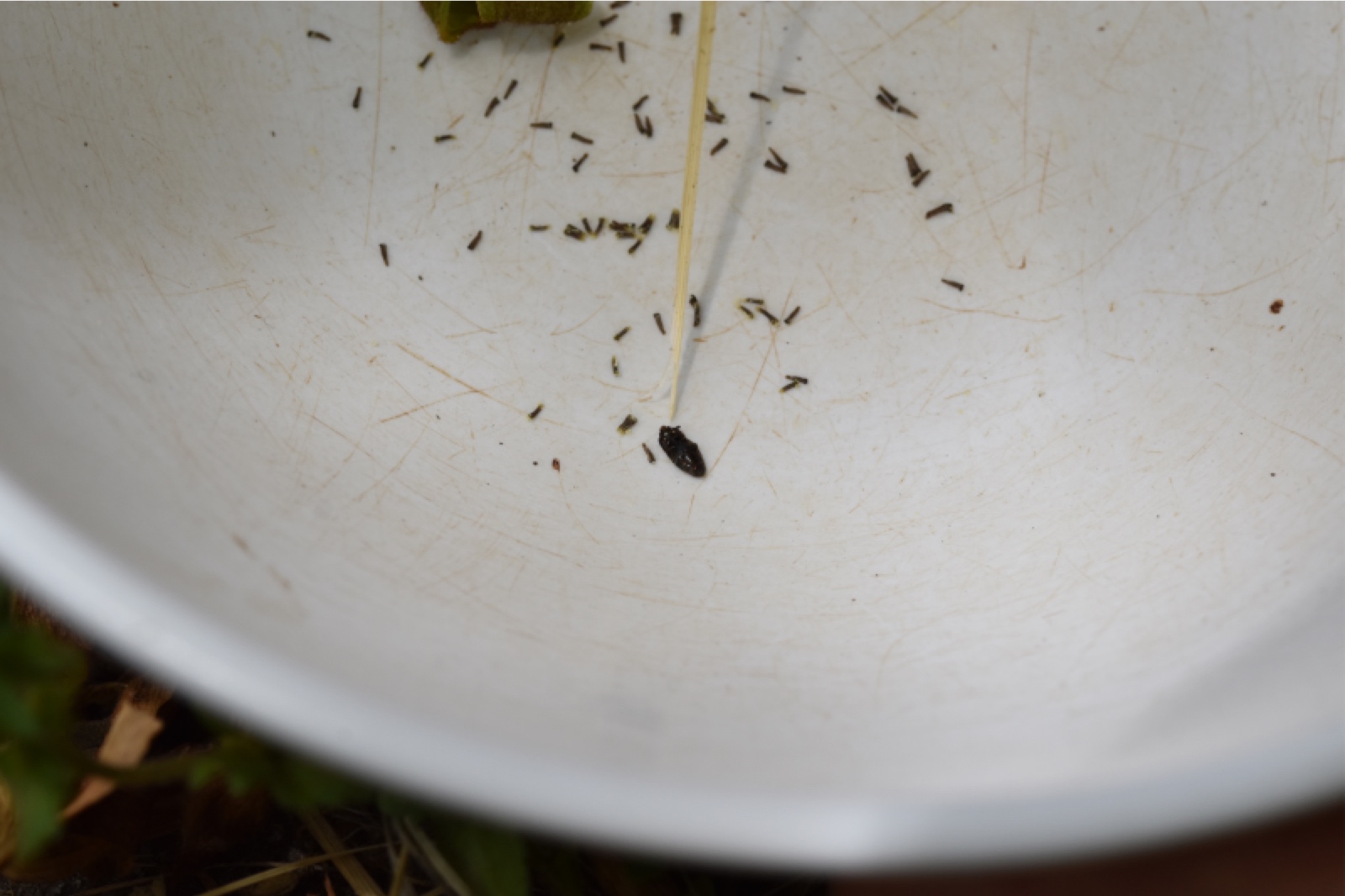
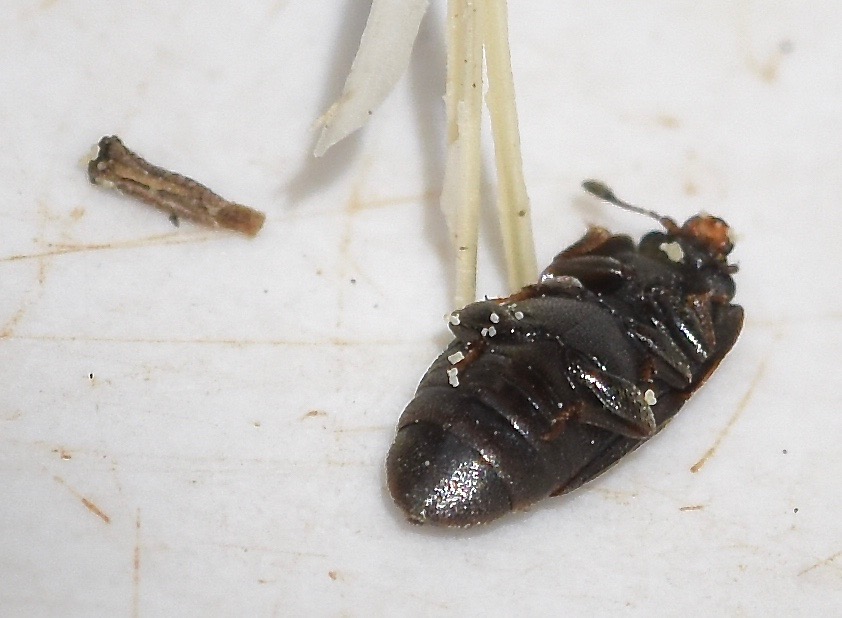
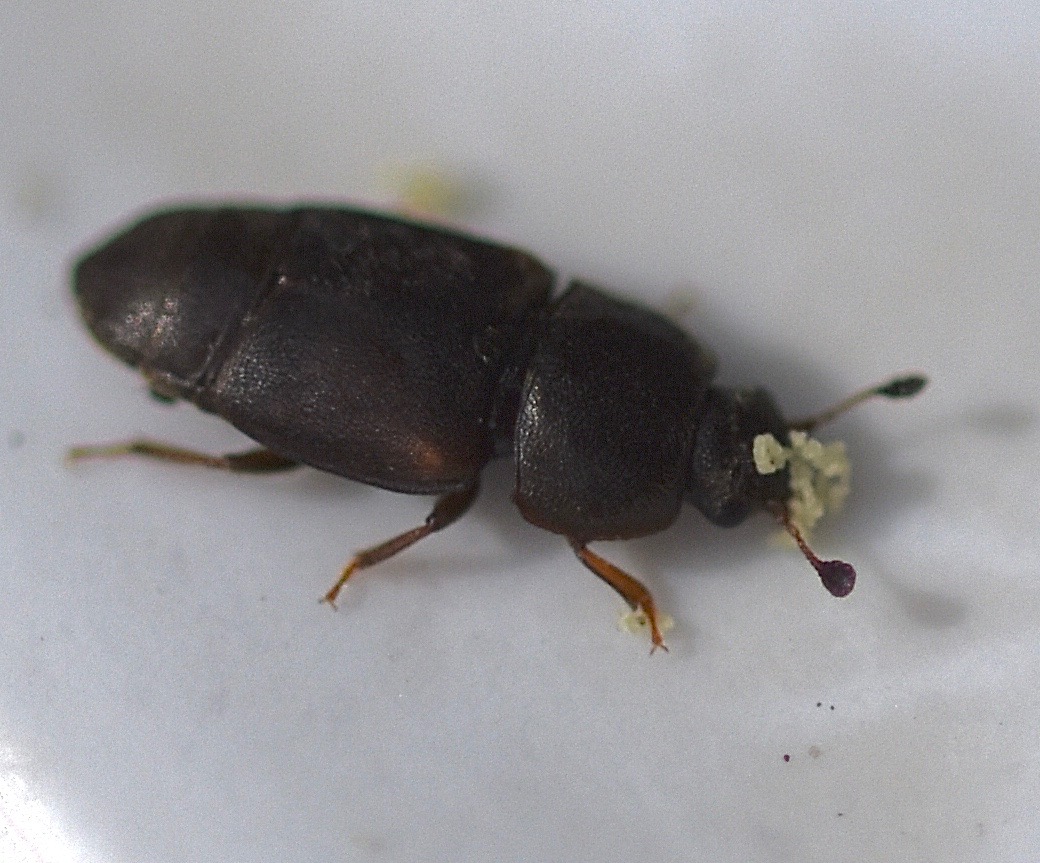
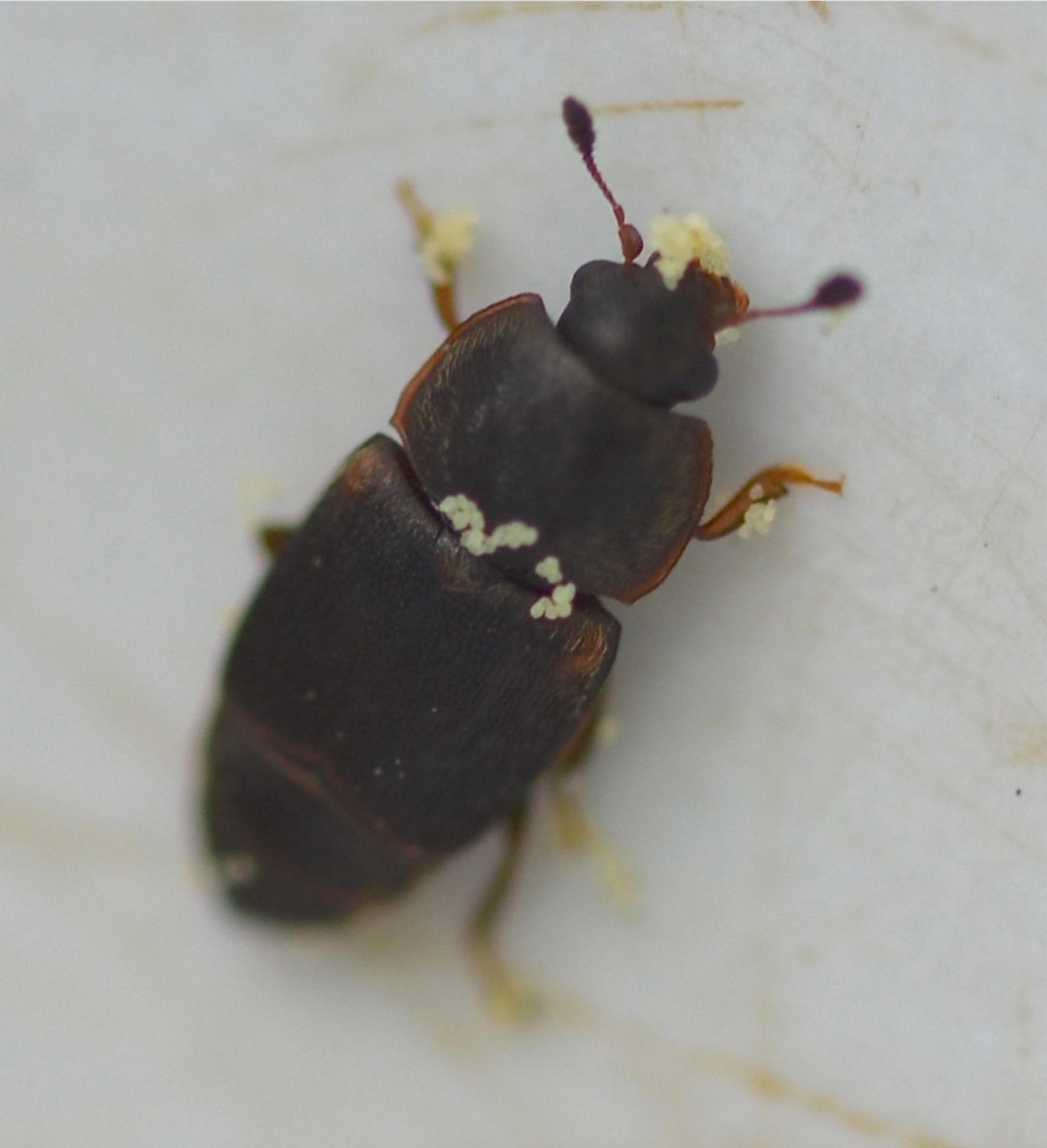
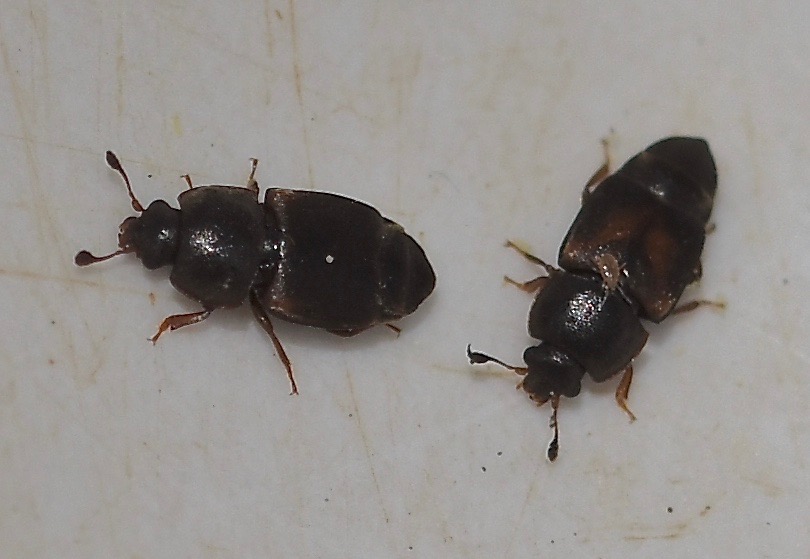
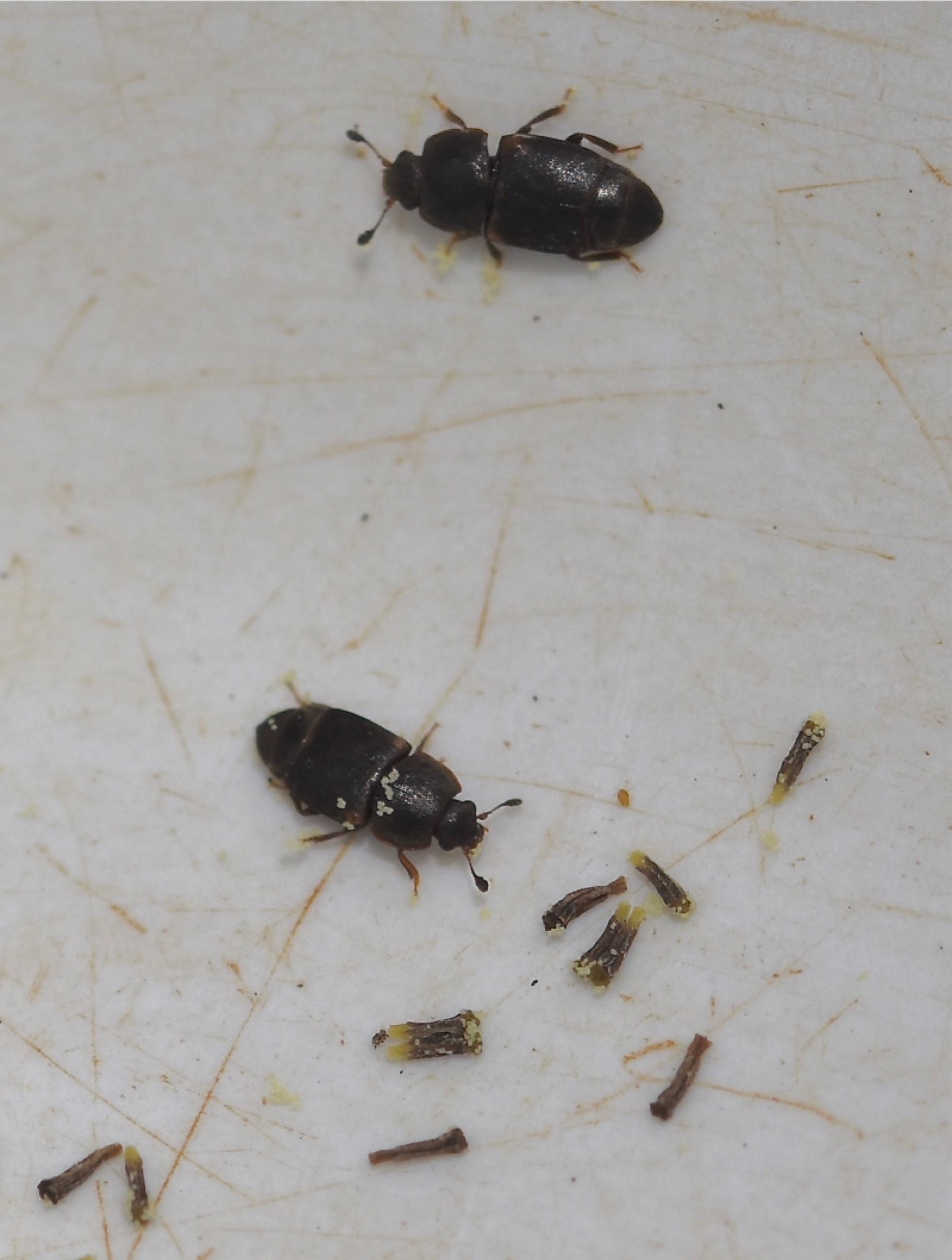
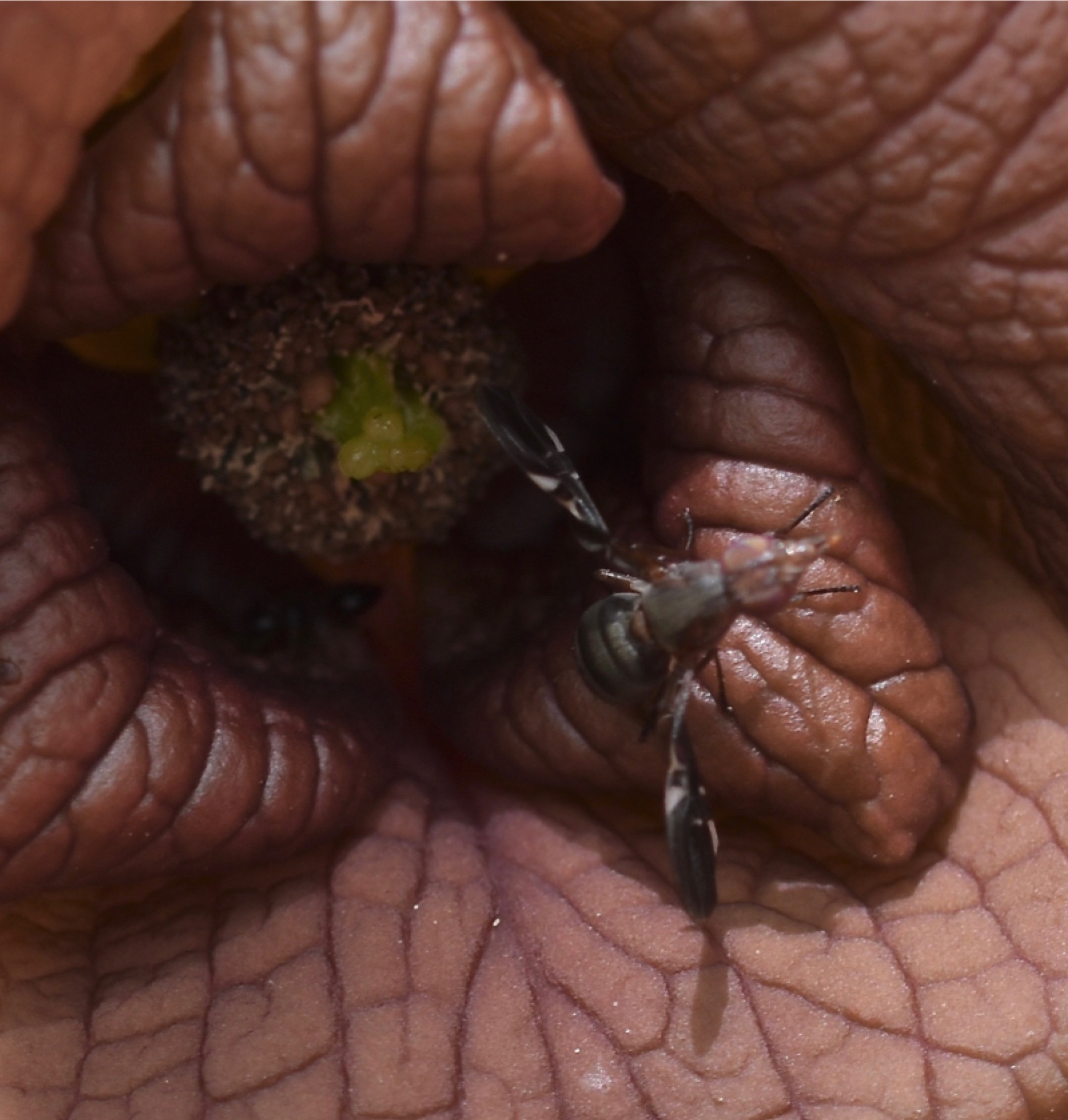
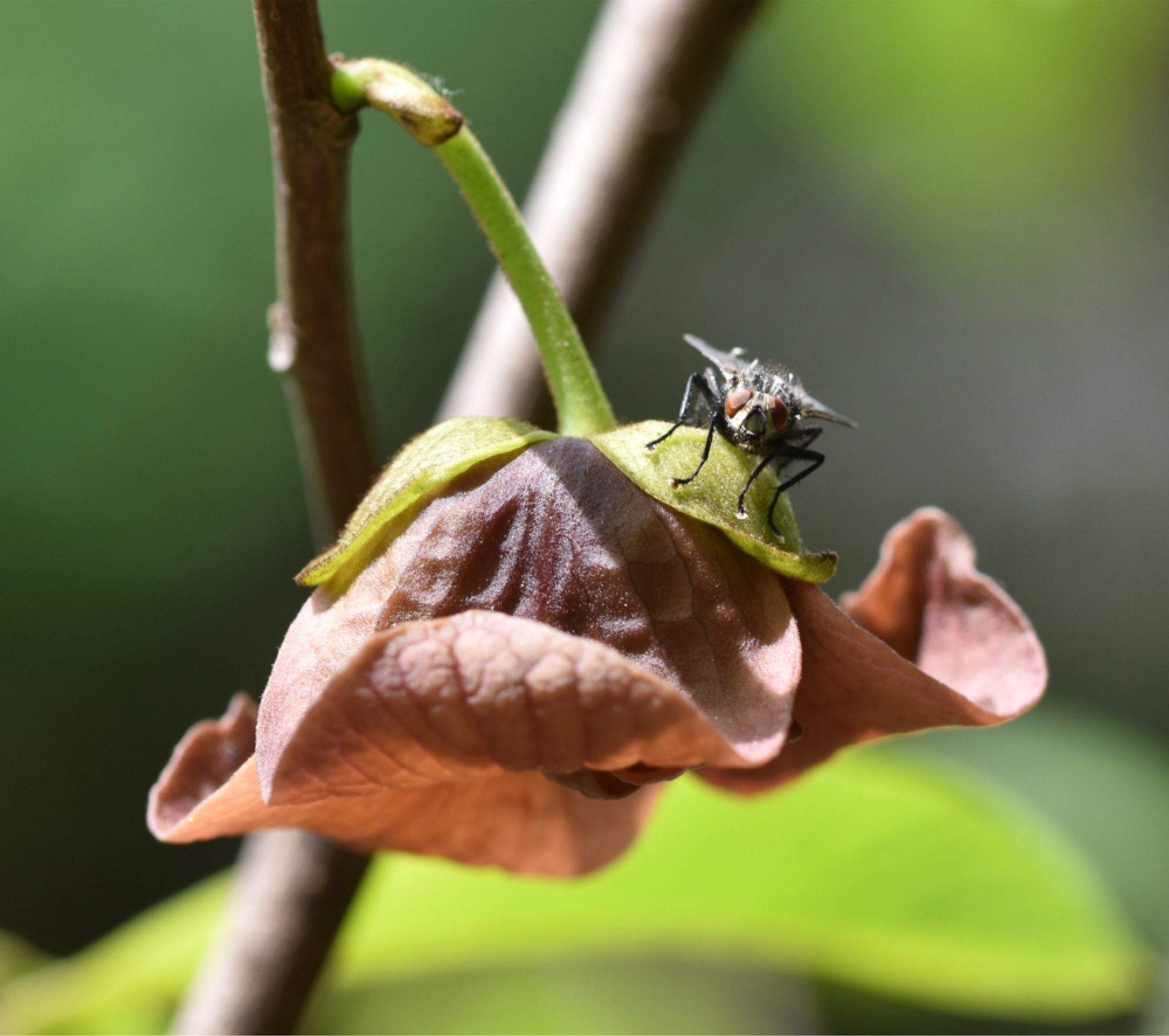
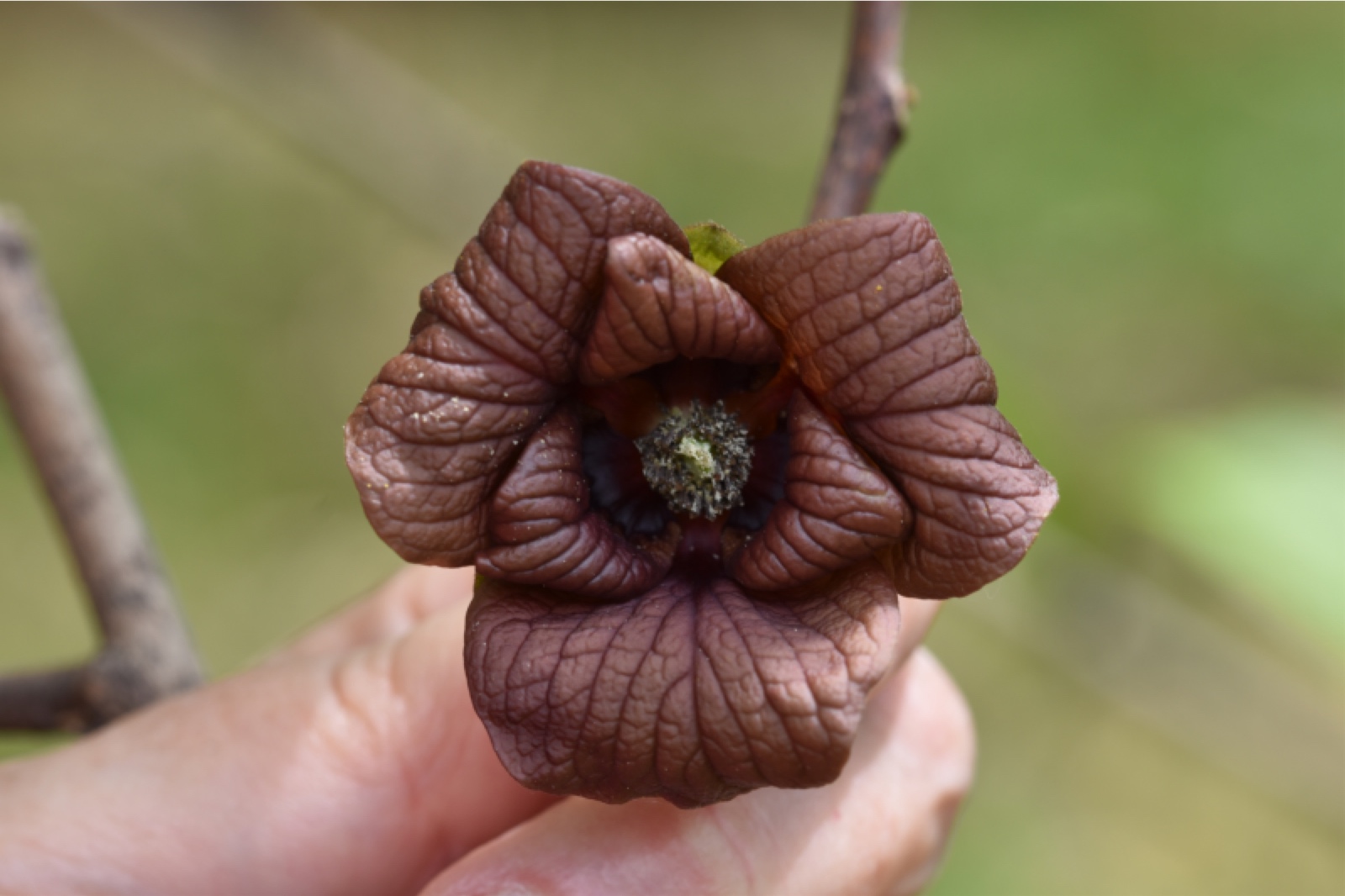
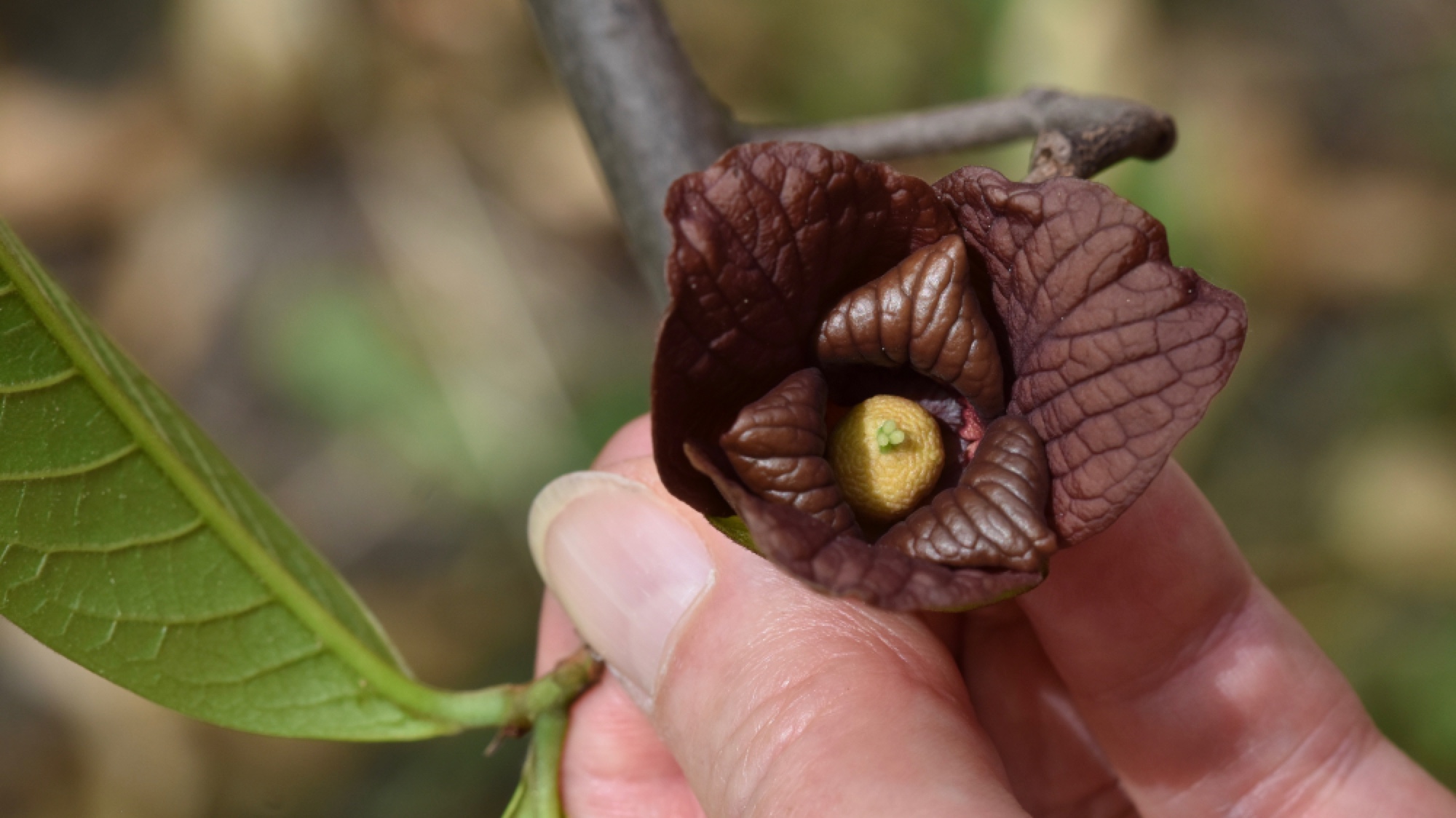
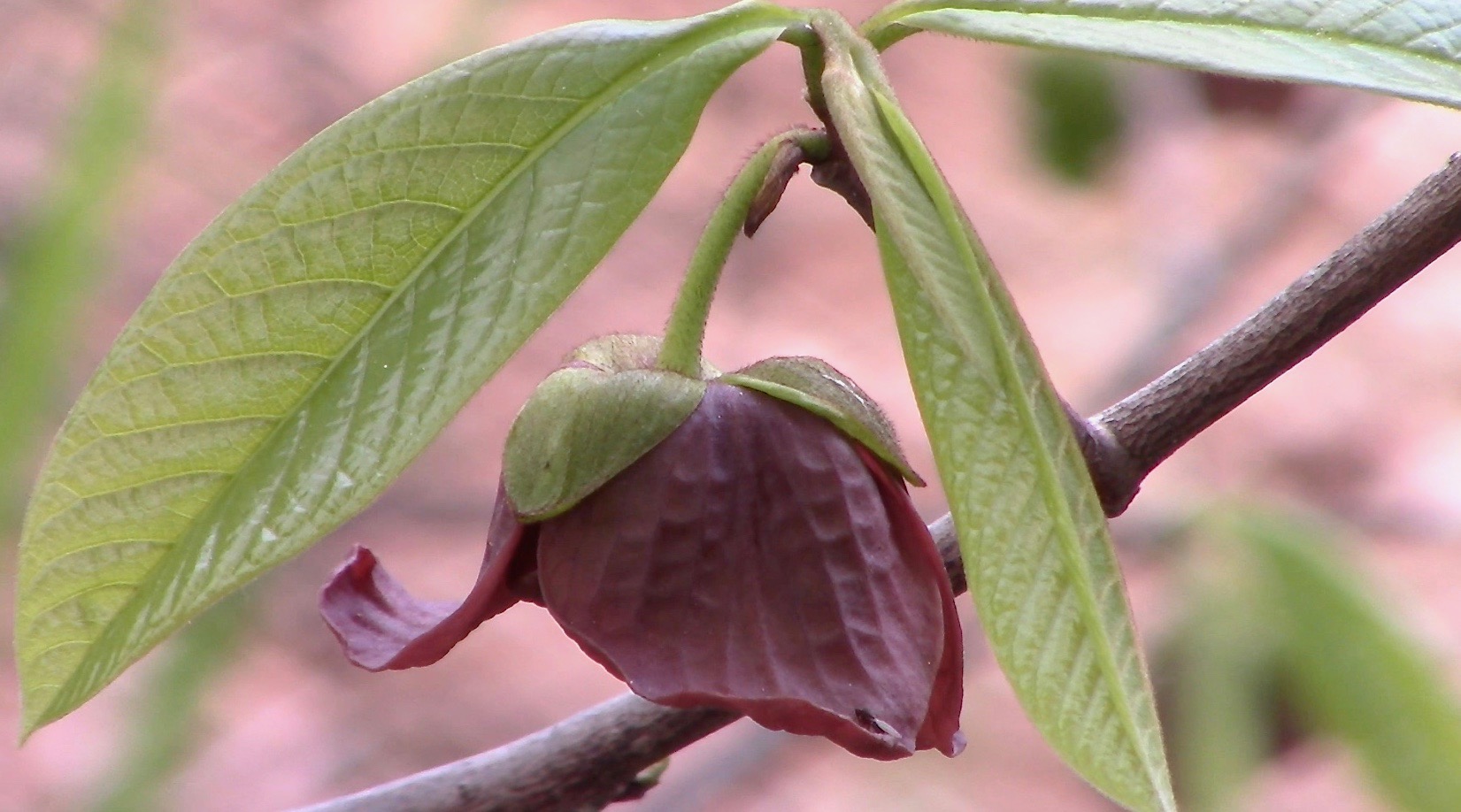
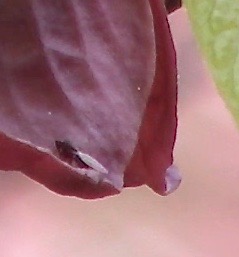
(main page)